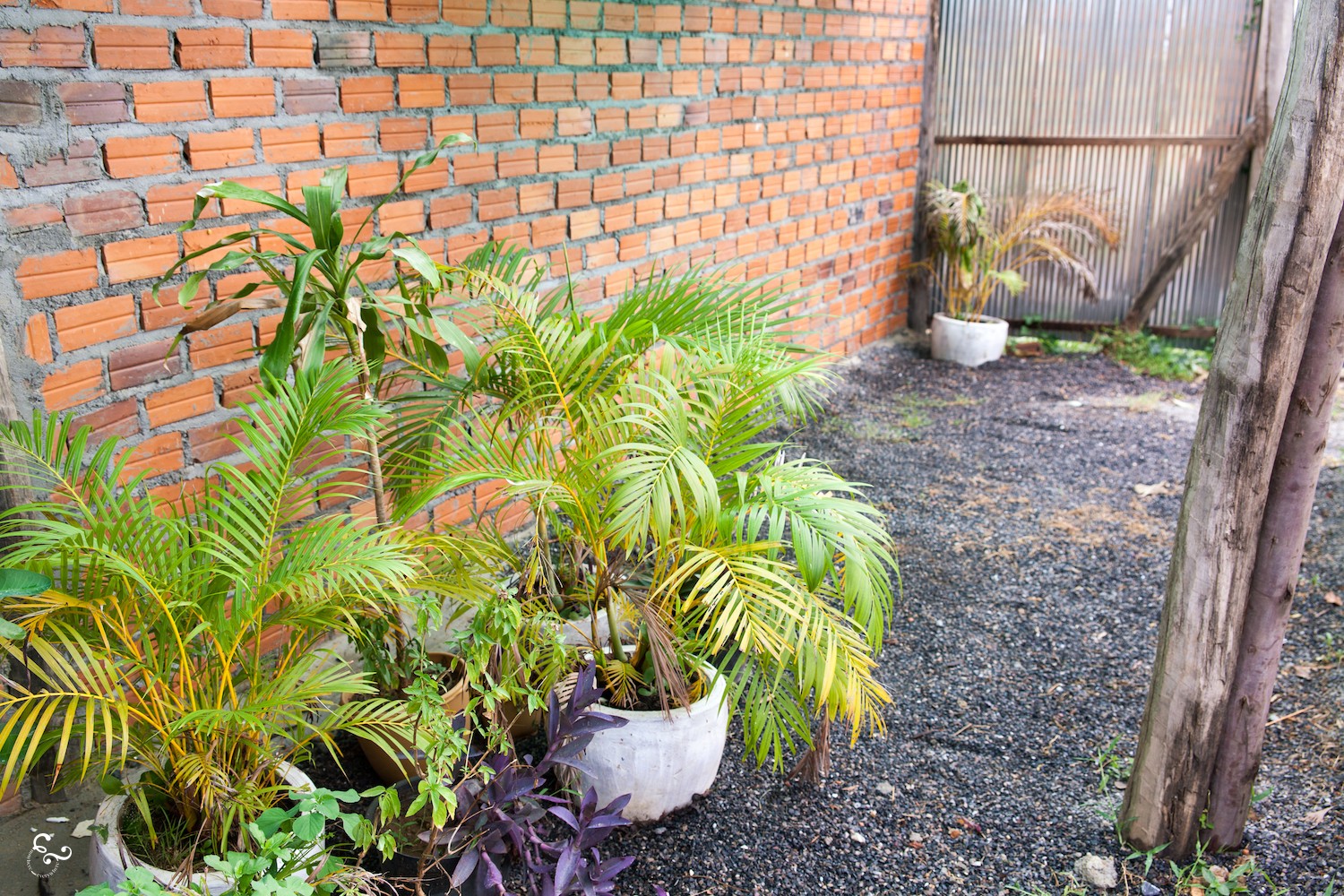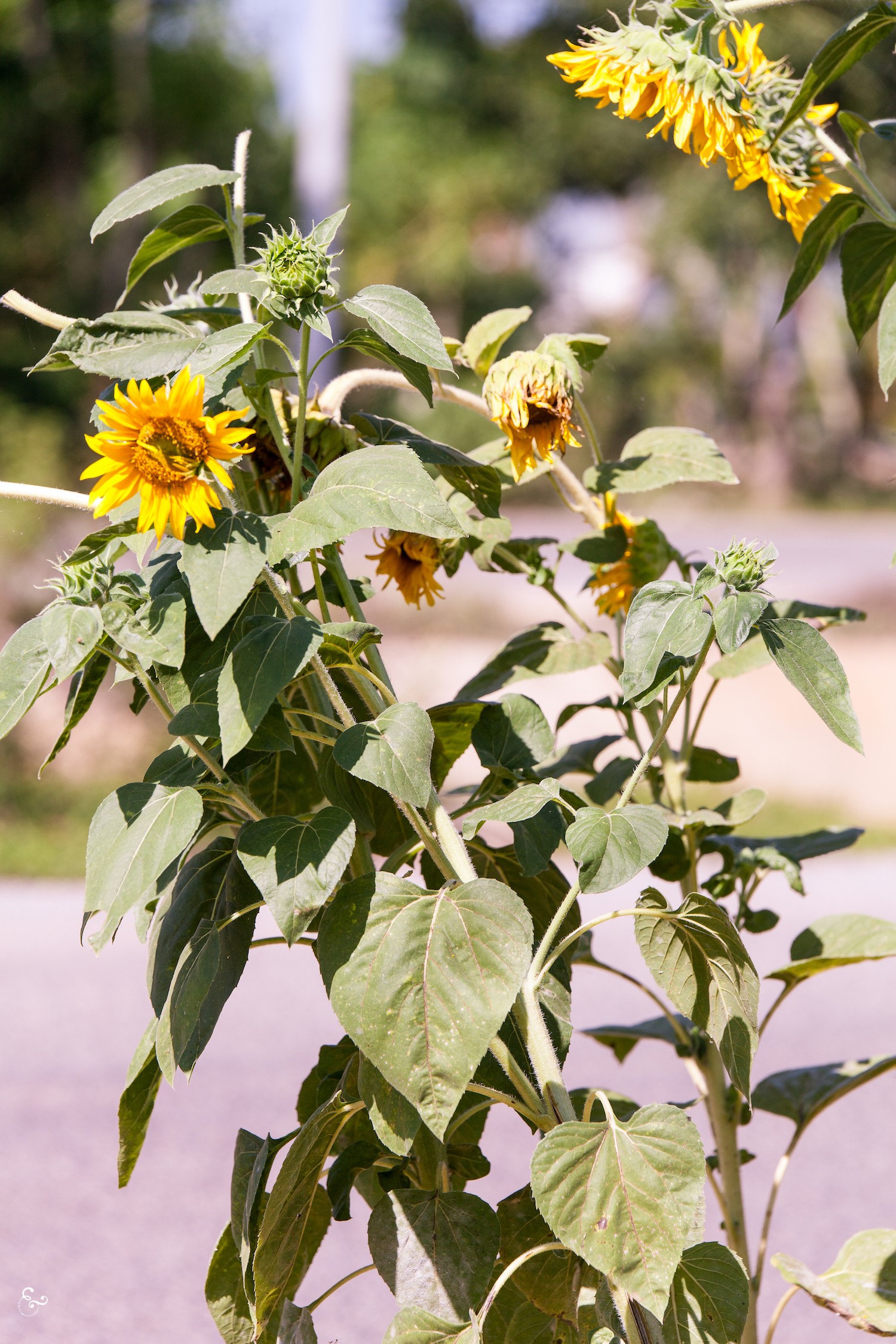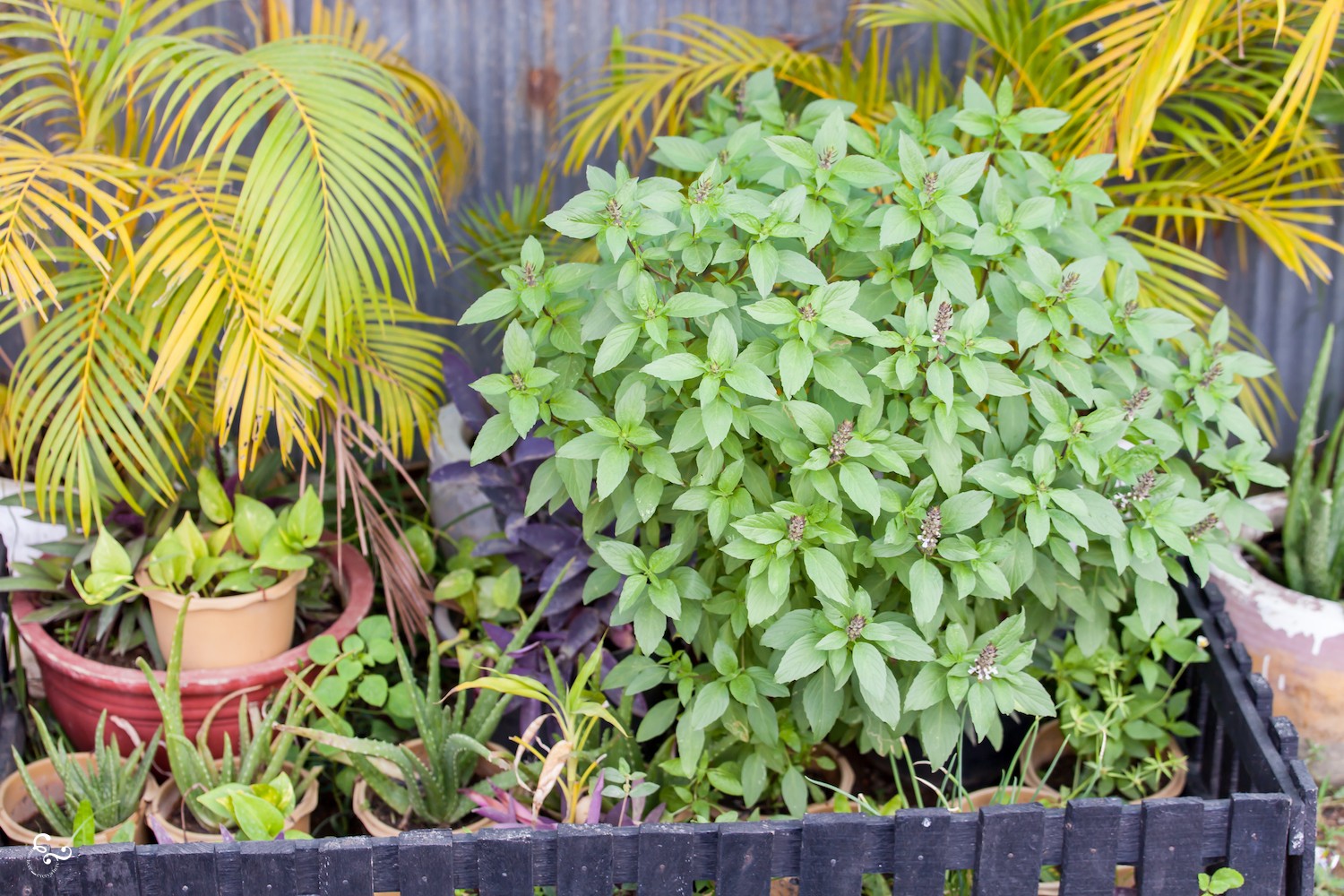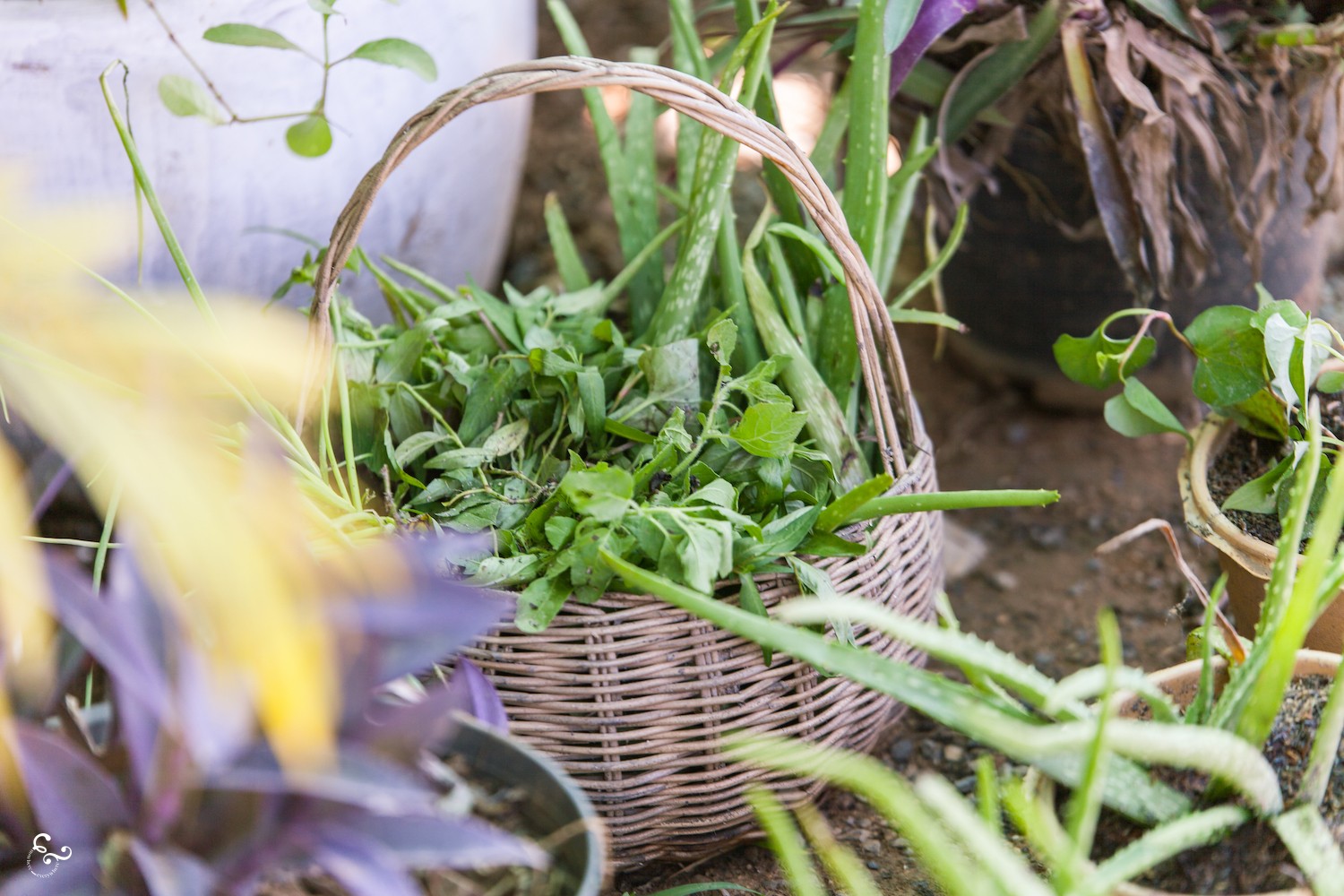We work in a rural area where Lis has spent the best part of a decade working. When we decided to create high-quality hemp & recovered linen products, we took on a small little sewing charity, run by a local organization who hoped to create a few jobs. We wanted to combine environmental workshops, create products to try & help fund our education work, ensure there were beautiful low-waste gifts available for our world and importantly create truly ethical jobs in a positive workspace that also allowed community projects to happily continue. We took on this space with the aim of all this and ensuring it is a pretty great place to work.
But… why? Well, when not making products yourself, most companies head to manufacturing companies (largely in China and across Asia) to make their goods. We absolutely did not want to do the typical; order everything from China with a rebrand & sell at a markup, or mass manufacture in a factory we really have no idea is truly ethical, sustainable or committed to the environment. We wanted to help rural people. Most production is concentrated in or around city areas. We believe strongly in helping local, grassroots organizations. This place needed assistance and we wanted to do it in a way that created a positive space whilst still supporting community projects. We didn’t want to be part of an industry where workers get shipped in on trucks to sit in rows of people spitting out as many products as possible for a western client.
We wanted to be able to work on salaries and increase them whenever we can. In factories they produce goods for multiple brands so you don’t have a say over how much you pay them or how they work (and whether it is truly ethical). They are usually paid low wages, if they meet quotas. We wanted to make it a nice workspace – one that was safe, inviting and that we would work in.
We wanted to be able to control things like how goods are packaged and shipped to us (without plastic), how we source fabrics (recovering them), how we use our waste (all of it) and how we label (by using our scraps). You can’t dictate that to a manufacturer. We wanted to be part of a small space. We didn’t want big machines making things. We didn’t want to contribute to emissions from a factory. We are small and handmade and have as little impact as we can. We wanted to make sure workers could go hang out with their families for lunch, be working normal work days (7.5 hours) and bring their kids in if they wanted. The other week a mum came in with her kid asleep on her chest all morning with another in the hammock. It is super chilled out to work here and it’s exactly like how most of us work.
We absolutely could not have done this without our friends Pat & Tash who came over to spend a week of their holiday time working their butts off in 40+ degree heat each and every day without power nearly the whole time (it was quite a game getting drills charged…and working without them!). The support of Lis’s incredible mum Nellie, her partner Ken, and the generosity of John’s sister Angela and Lis’s sister Merinda has been invaluable and made this entire project possible. Without Megan & Emily the business would not keep running and without John our entire centre wouldn’t have developed.
We didn’t do this because it was fun or easy (climate change has brutally hit Cambodia so everyone is doing it tough out here). It didn’t make financial sense either. It has personally cost us a bit of a small fortune whilst we don’t make money through this business to support our work (we hope this encourages other businesses to put people before profit too; no business attempting to make money should be exploiting others in the process). We did it because it was the right thing to do; and the least we could do to make things right.
Keep scrolling to see what we did!
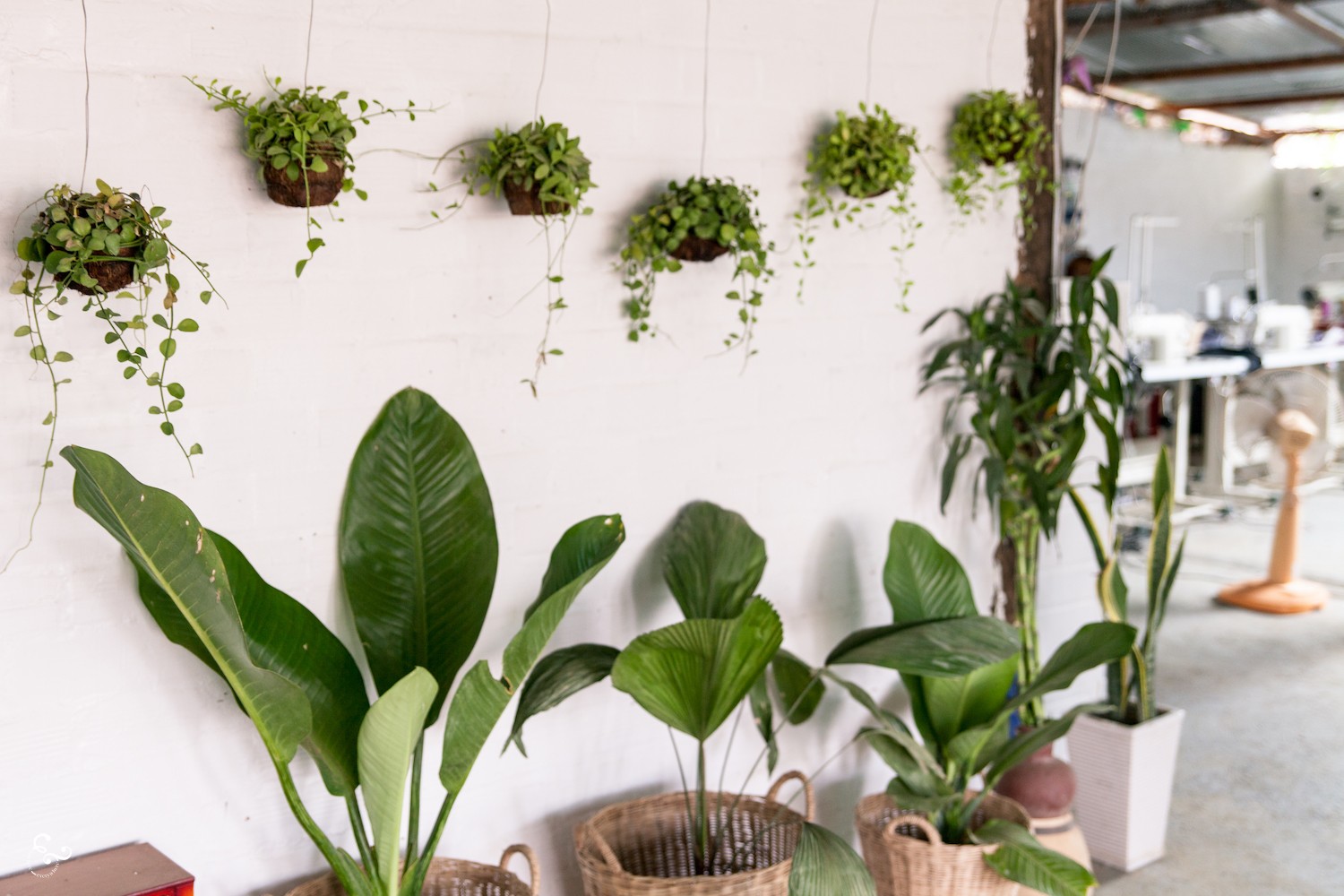
Renovating the building
Lis was already in Cambodia and started the groundwork (pun intended) of getting the new extension floor laid and the new walls bricked up. Lovely local workers took on the job and all our materials were sourced from a small local vendor in the village. All up we ended up spending a few thousand dollars on the labor and materials; for a rural village we hope this really benefited everyone there.
We are really limited in our resources and what is possible. In an ideal world a new, much more modern building with wonderfully flat rendered walls and a steel and tile roof would be ideal but that would have meant spending nearly $50-60k USD on a new site, or knocking everything down here to spend a similar amount on creating it. We didn’t have this kind of money and wanted to use everything already there as much as we could so we didn’t double up on resources.
Any of the bricks or roofing we took down was used and recycled by other members in the community. Our personal funds (and debt!) and the generous help of a few others mentioned above allowed us to do all this. In case it helps others, all up it cost about $15,000 USD to get this centre done.
Note: Much to Lis’s design eye horror, walls aren’t really built in a straight or flat way out here. We do the best we can with what we get!
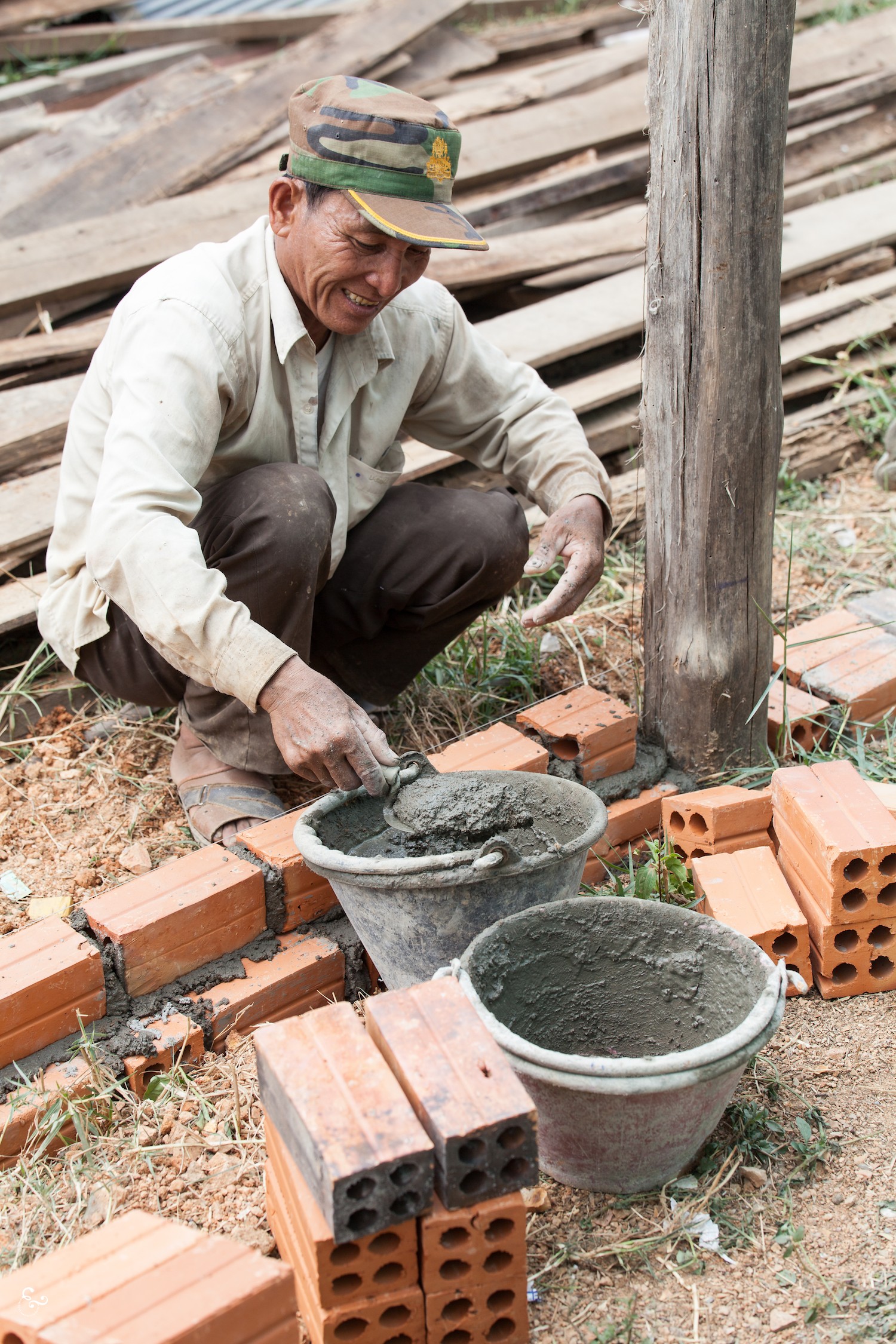
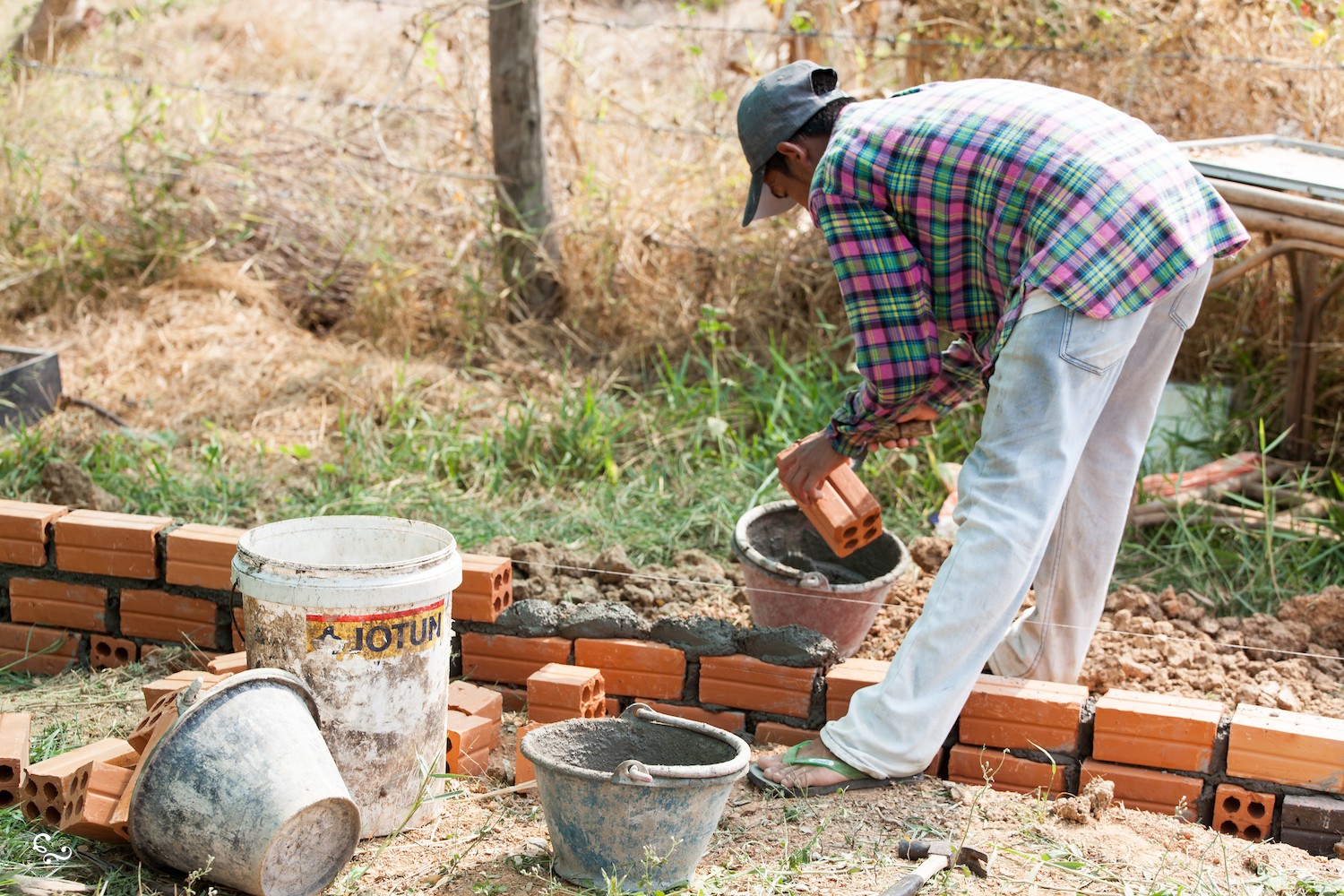
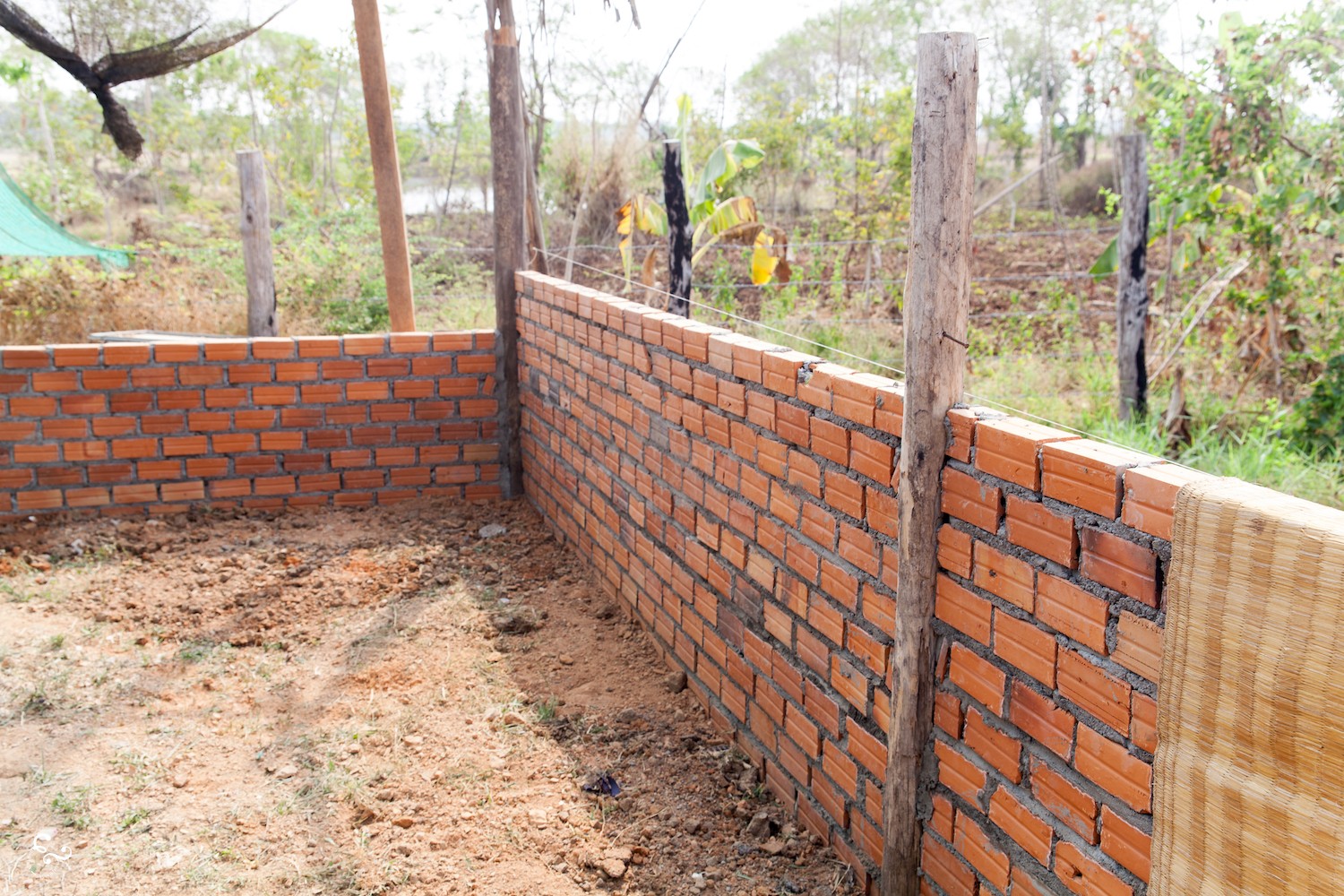
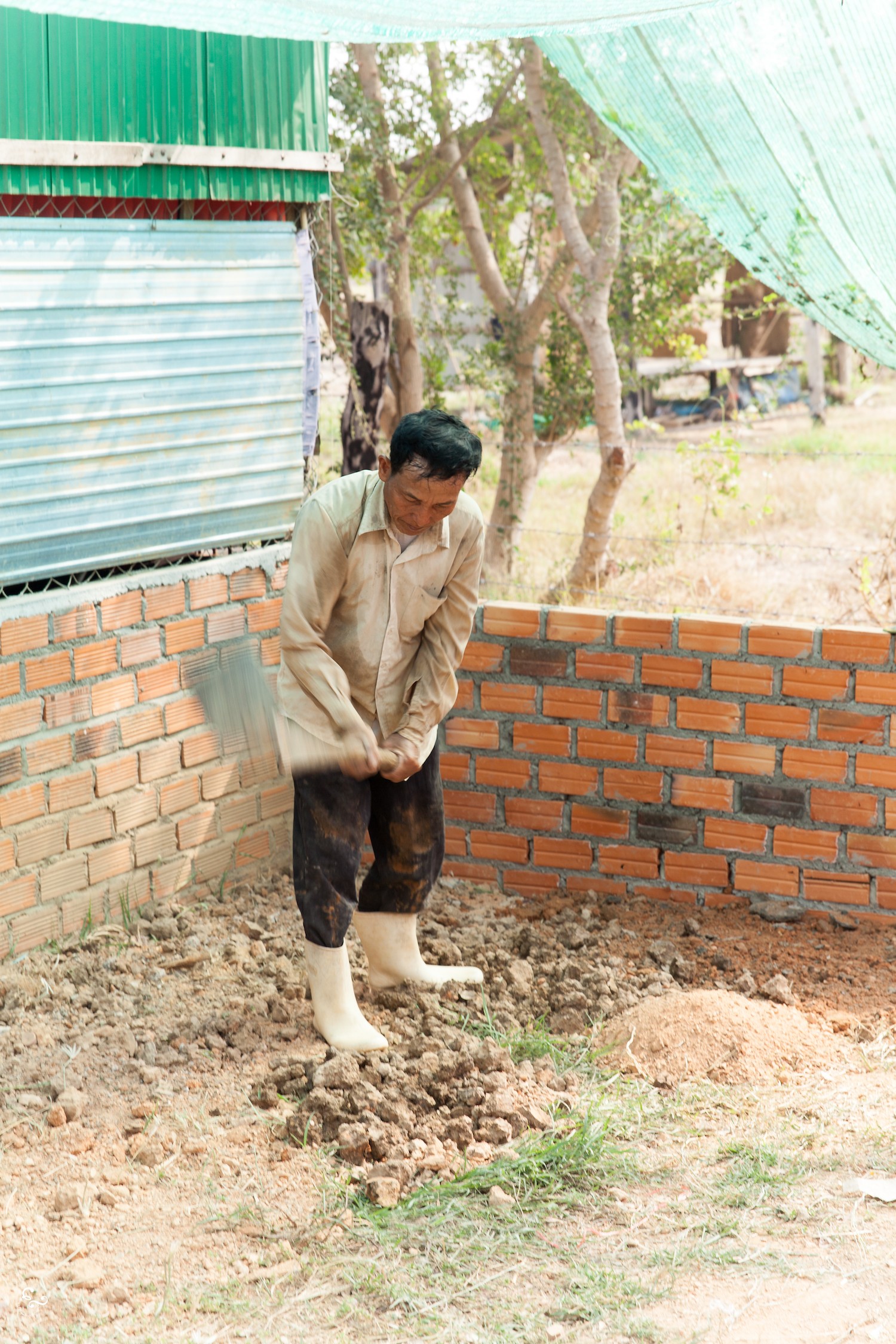

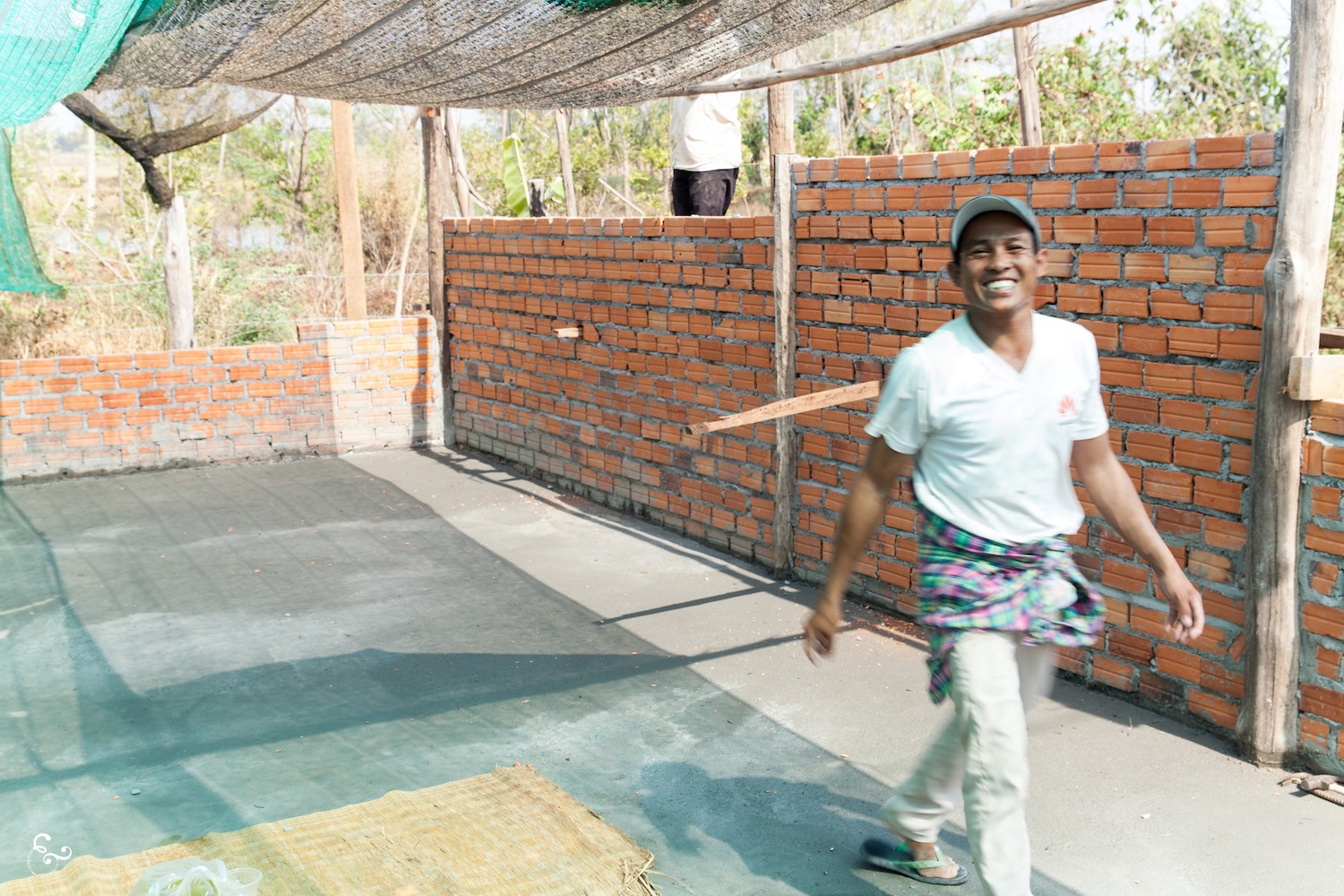

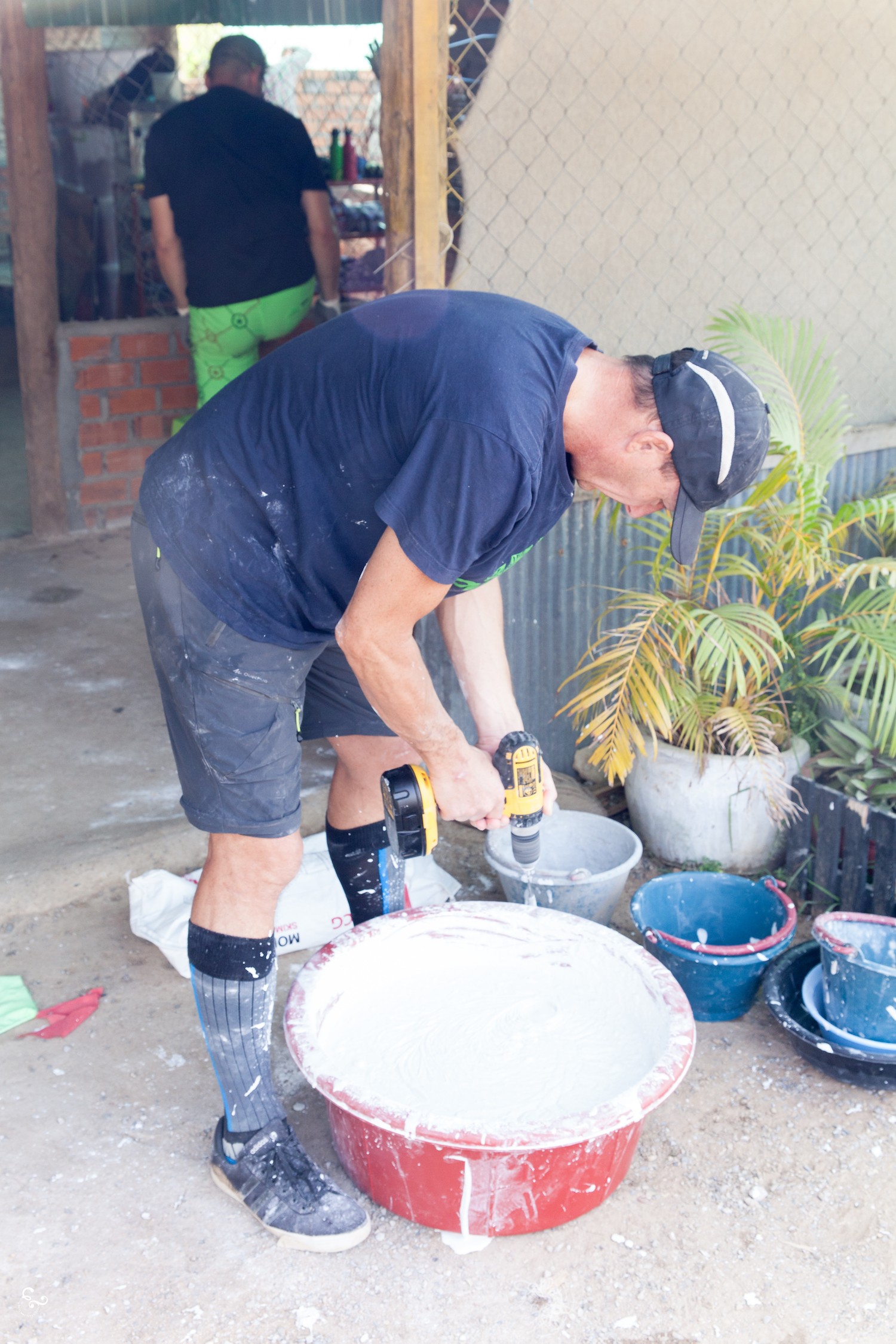
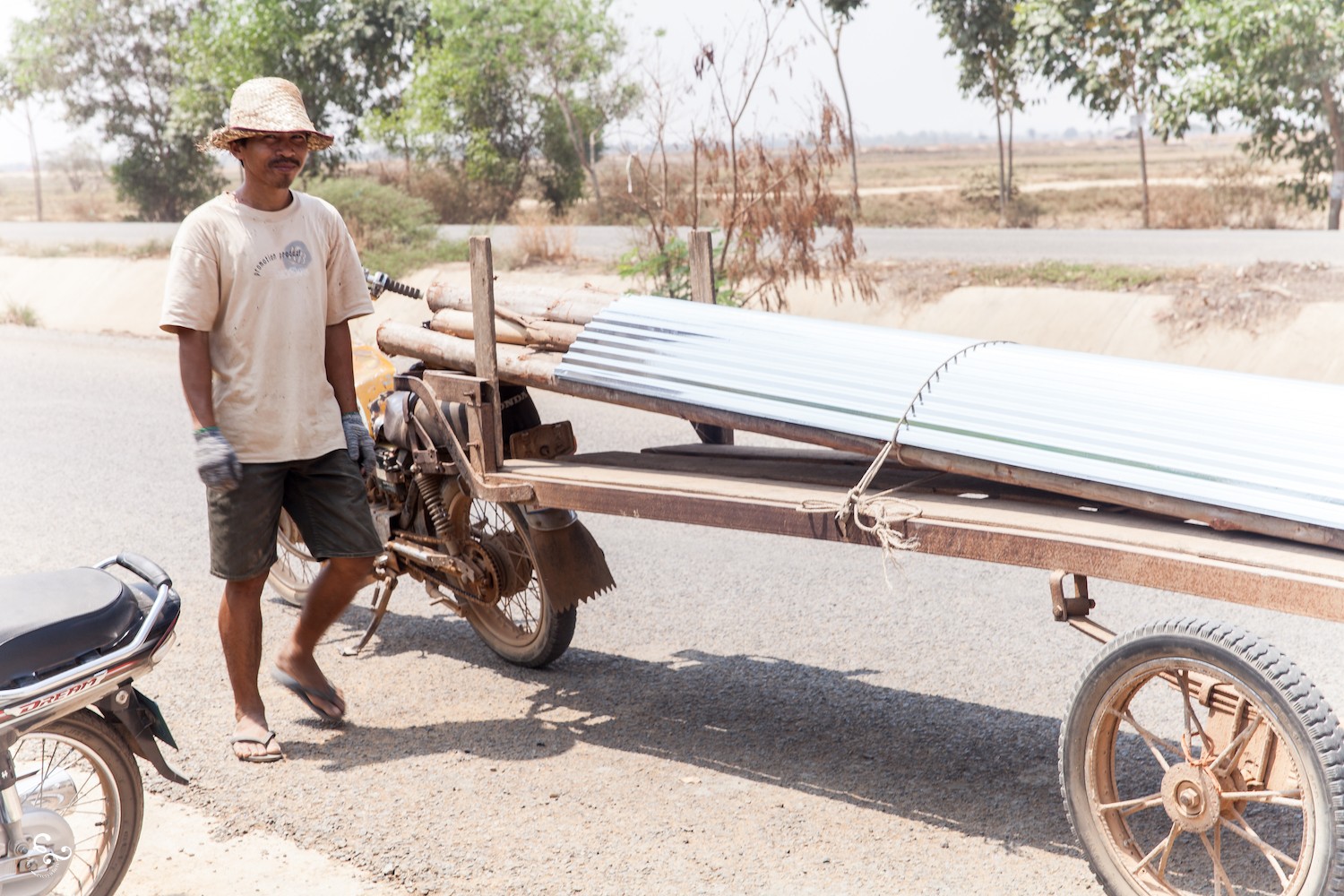
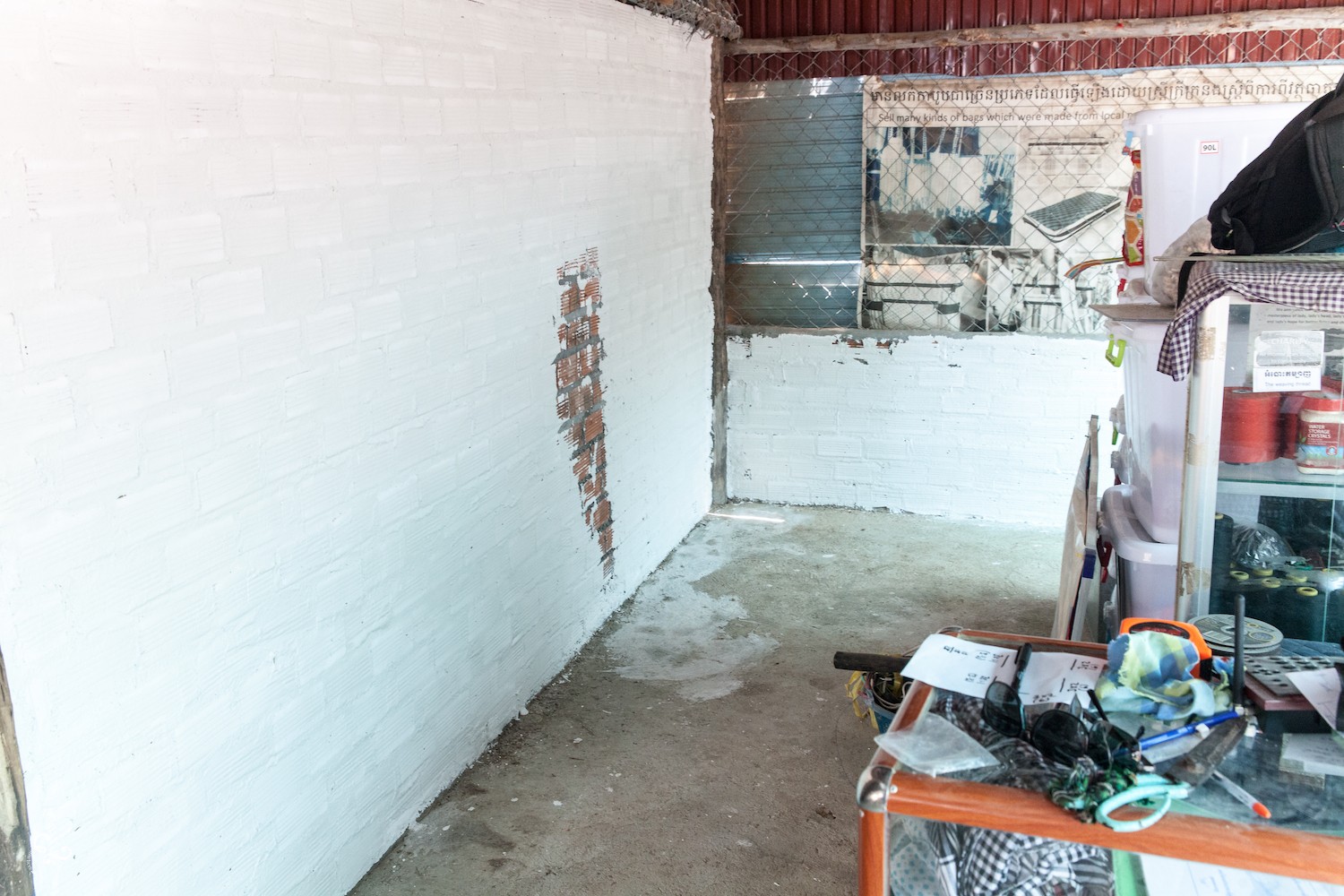
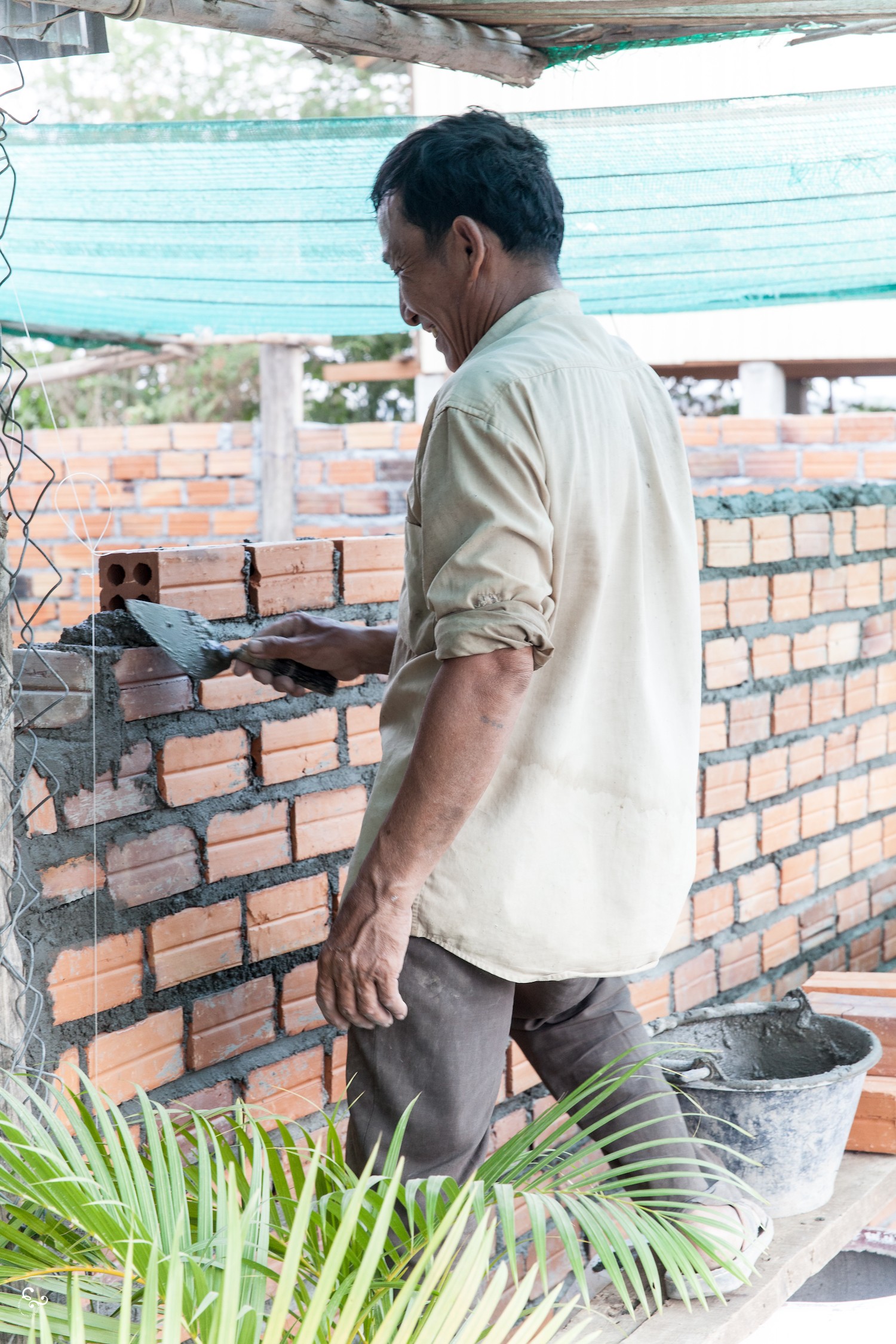
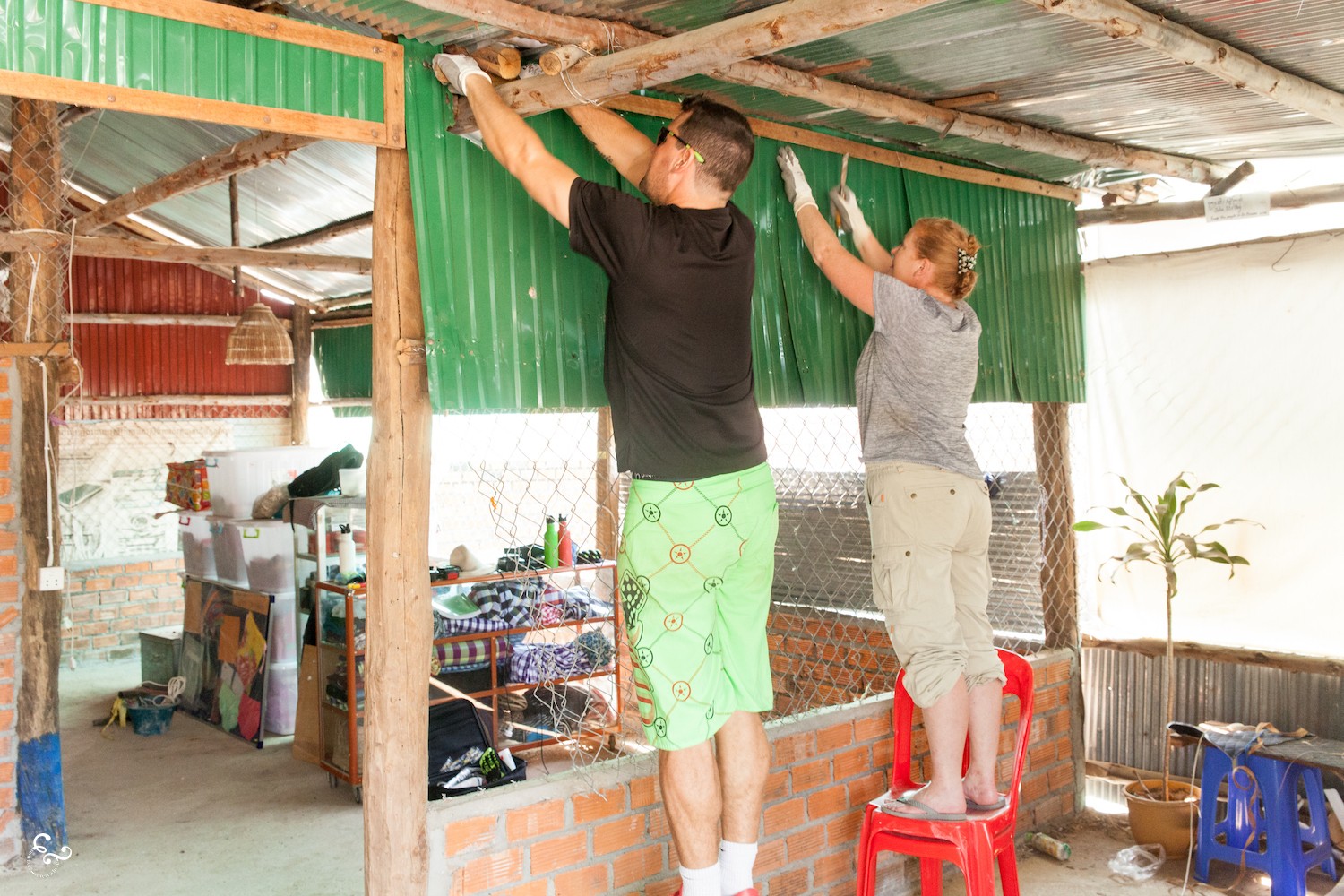
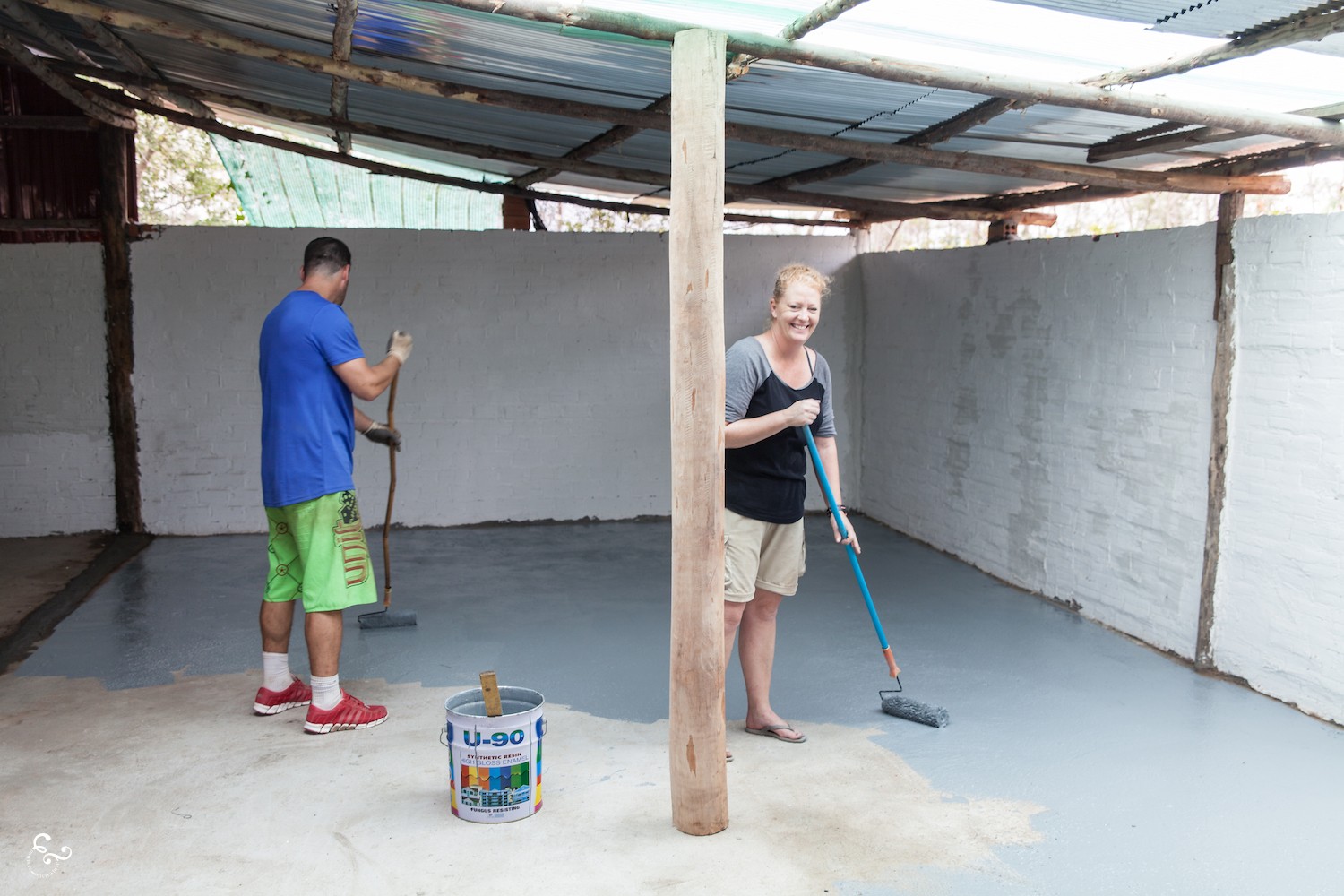
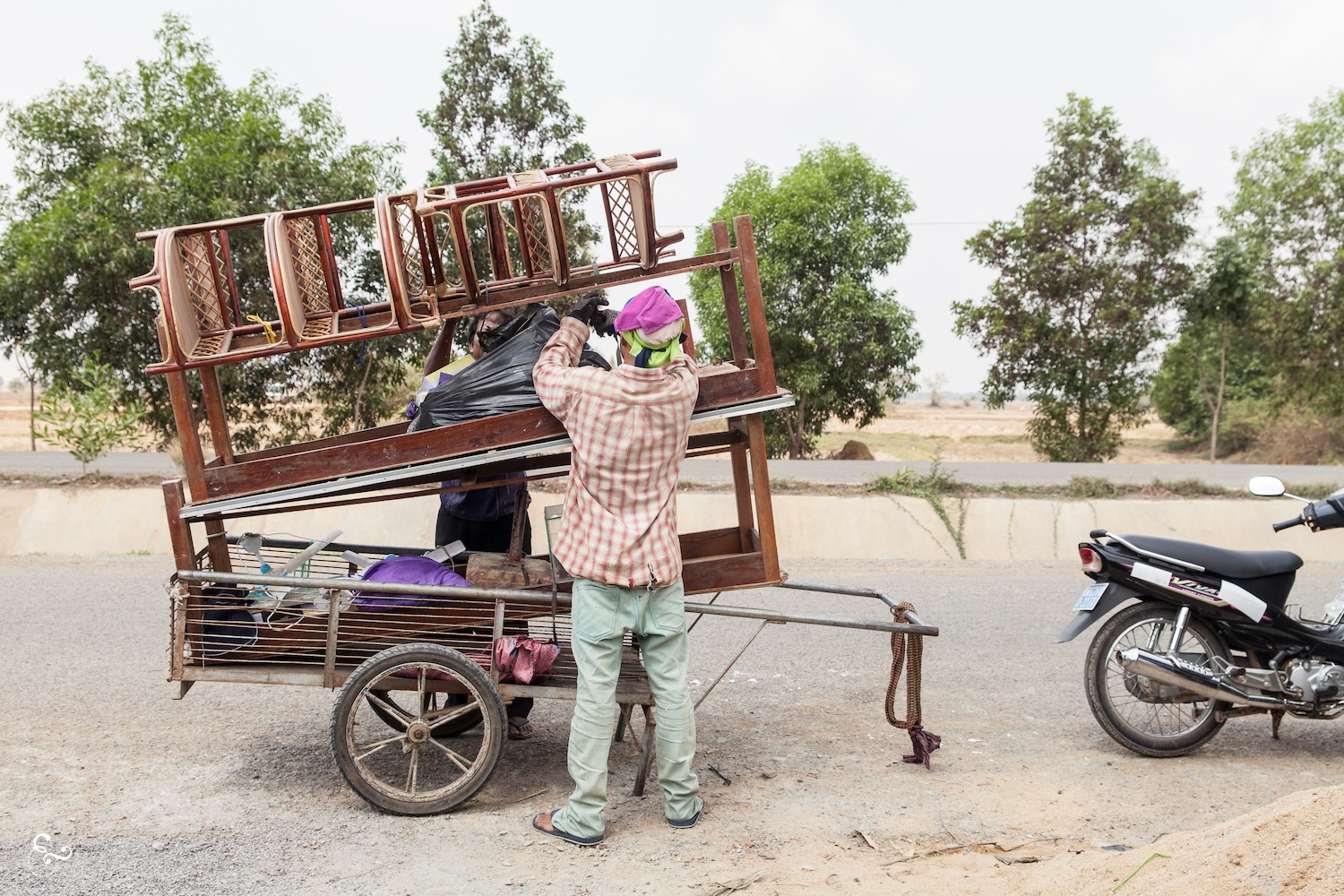
Fitting out the interior
After 10 days in scorching heat (at some points you could only do one task, then sit and drink an entire water bottle and rest before moving on) we got the building in a good shape! A brand new space with a clean floor, storage and room to move. Over the next 2 months we fitted out the space with a lunch table, cutting table, baskets for items (i.e. the collection of coconuts), moved the weaver inside to finally be part of the studio, had shelving made by local woodworkers and created pinboards for the sewing thread to be easily located and used. Pat ran all our new electricity, new lights and we installed 5 new fans so every worker could be cooled during the day (so long as we had power which is currently a major struggle).
We also spent weeks collecting nearly 600 bottles to cut off the ends and install them in the roof space we had left open to create a cooler airflow. We pinched this idea off homes in Bangladesh. If you blow on your palm with mouth wide open it is warm air. If you purse your lips and blow it’s much cooler. This is the idea of the bottles; creating cool air coming in to the building.
Pssst. if you know Ikea well you’ll see their storage baskets in the furniture shelving we had made. This is as all the other storage furniture we buy is incredibly expensive out here and we needed a lot more. It is all second hand and cheap plastic drawers but due to how far it has to come and the importing costs, one set of drawers is about $80 – $100USD. We had already bought multiple and needed an option to store more items in space that could be stacked around walls. This method means we can make the exact same pieces each time which helps and it stores more than the drawers can hold. The baskets just squeeze into our suitcases on an angle!
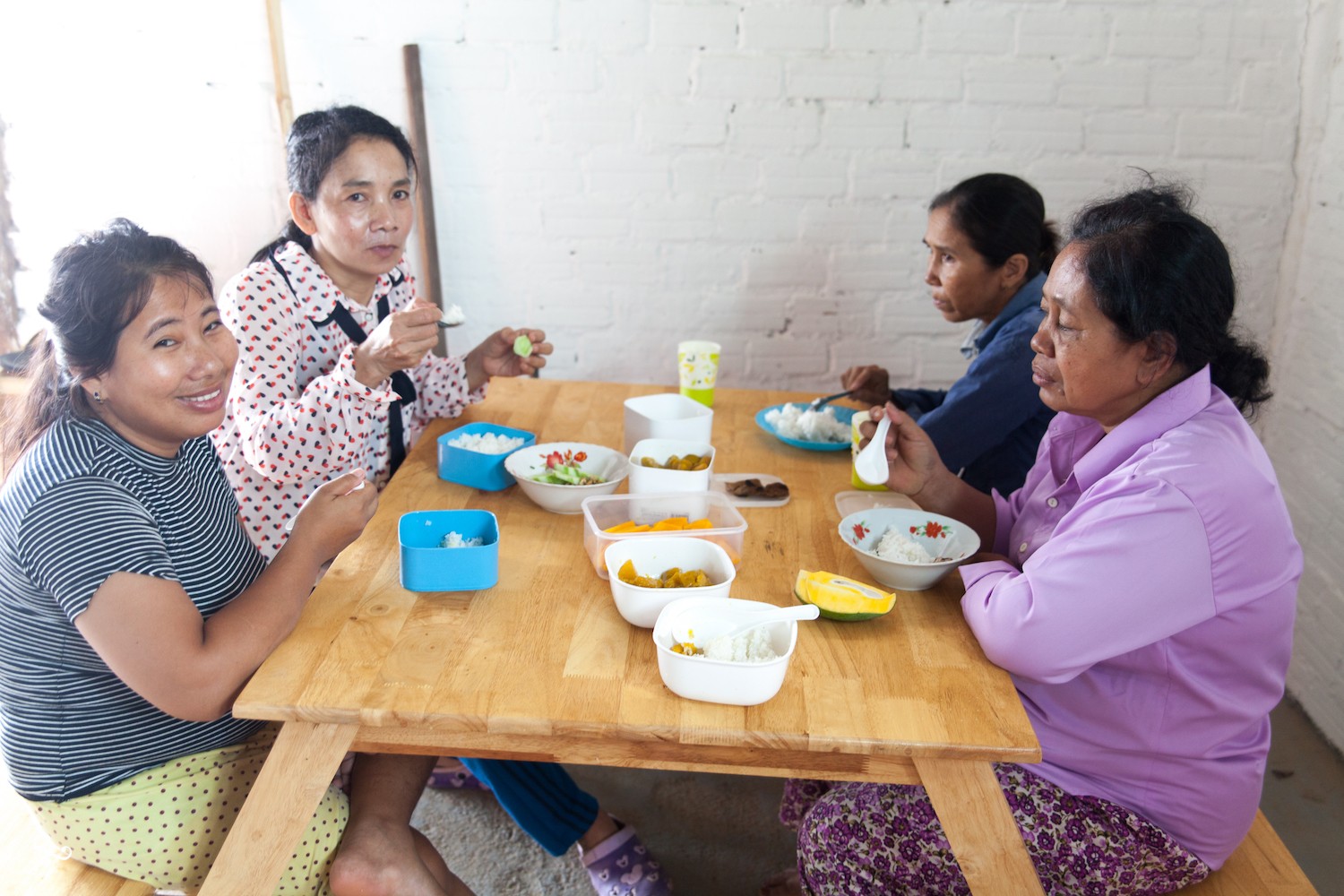
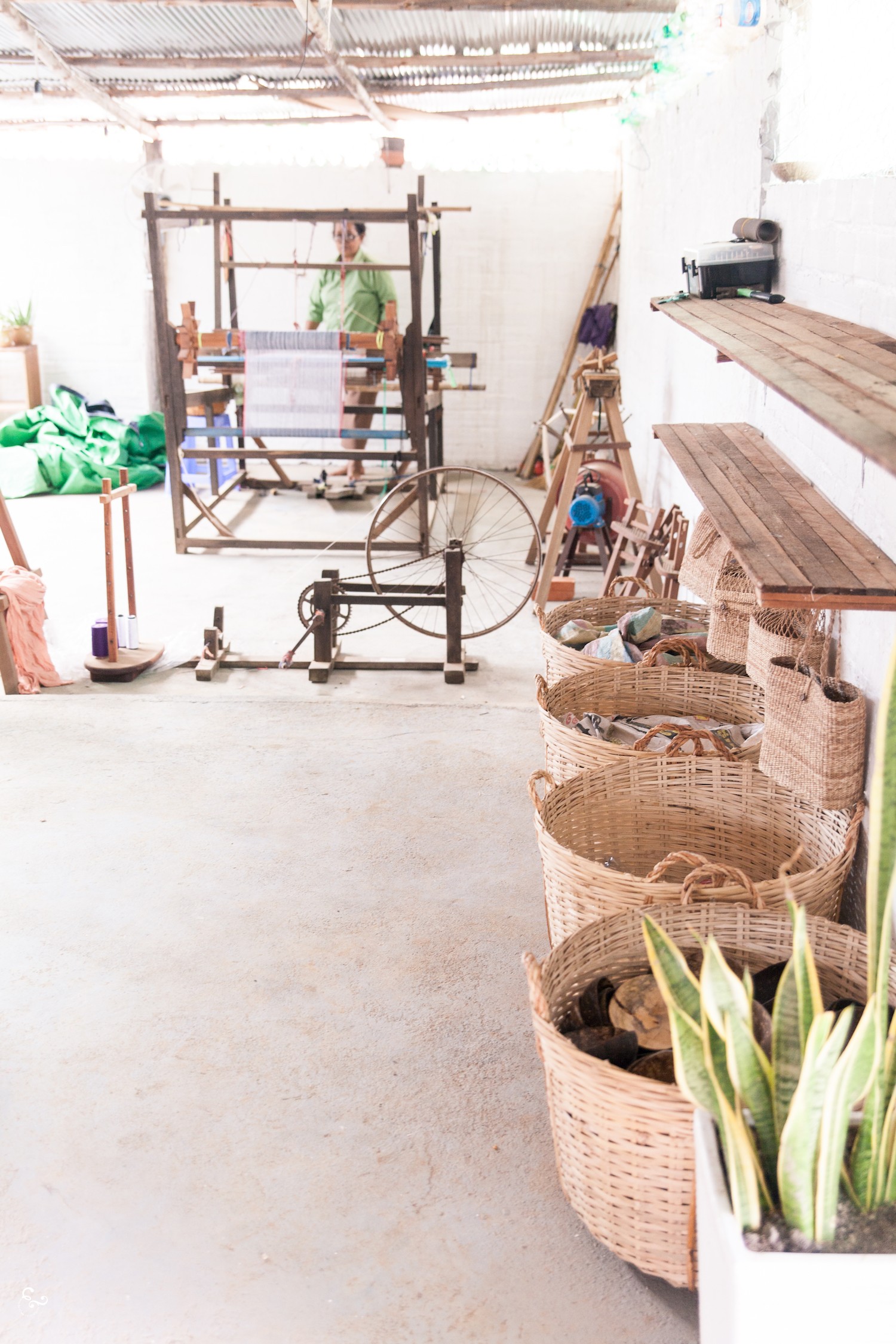
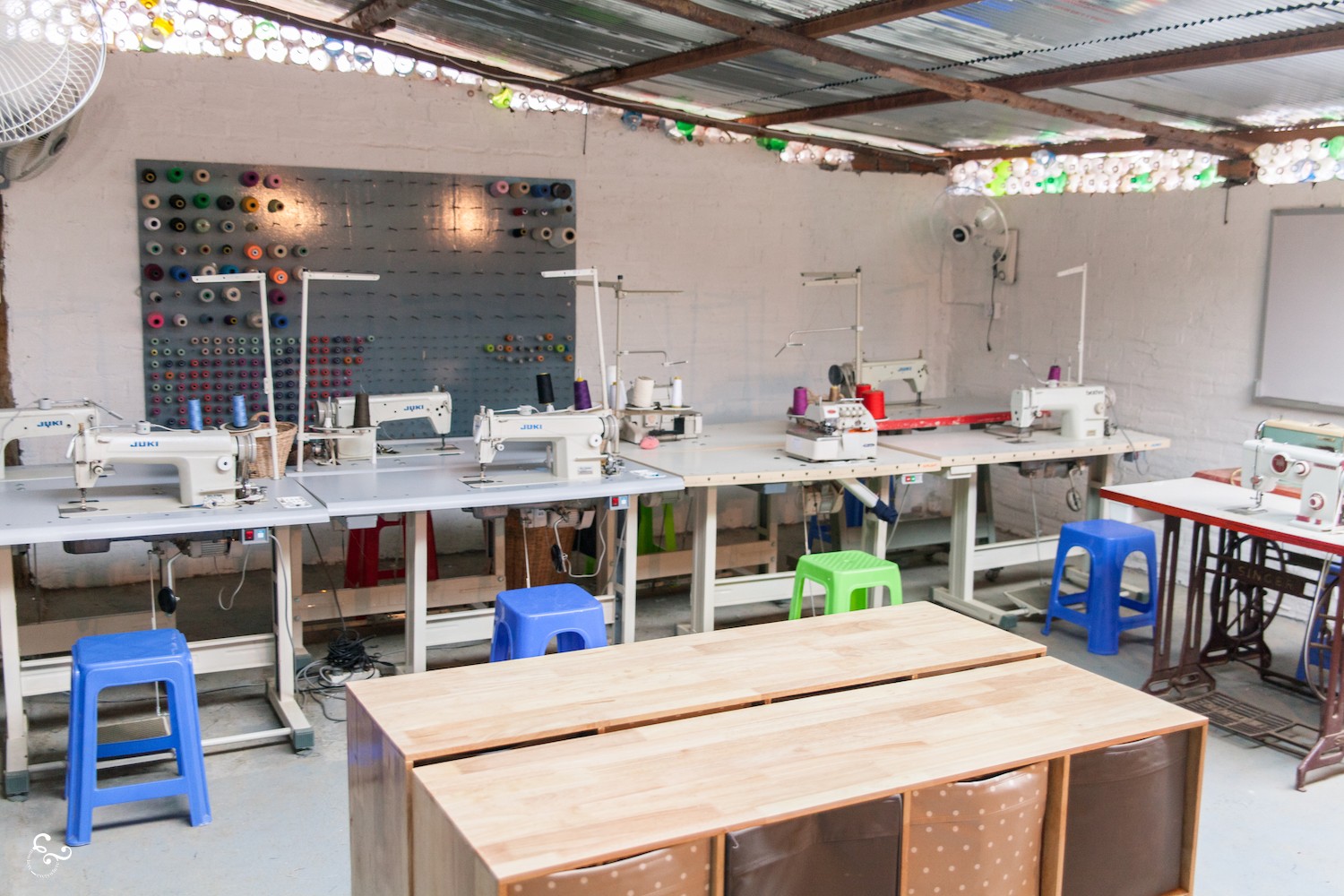
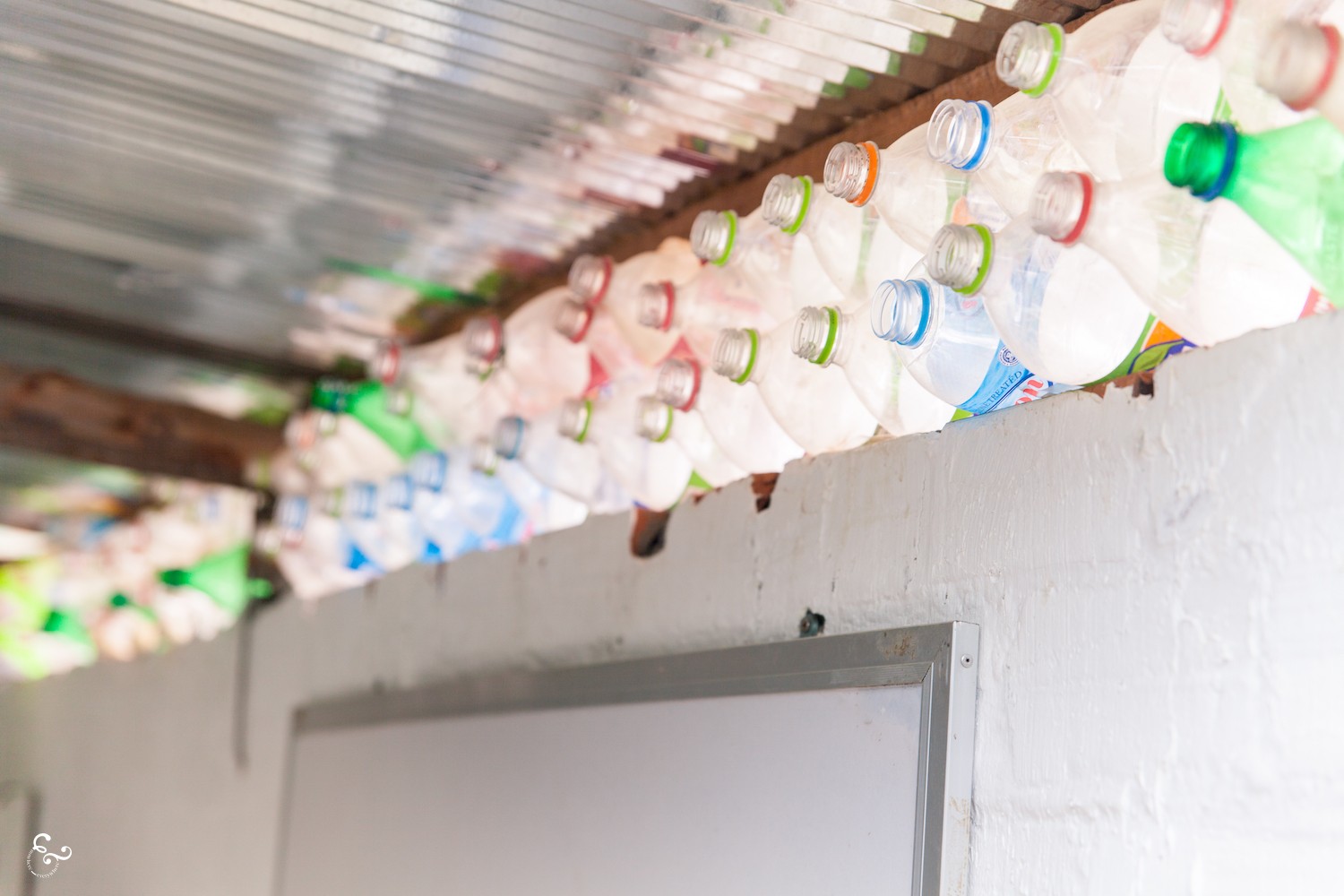
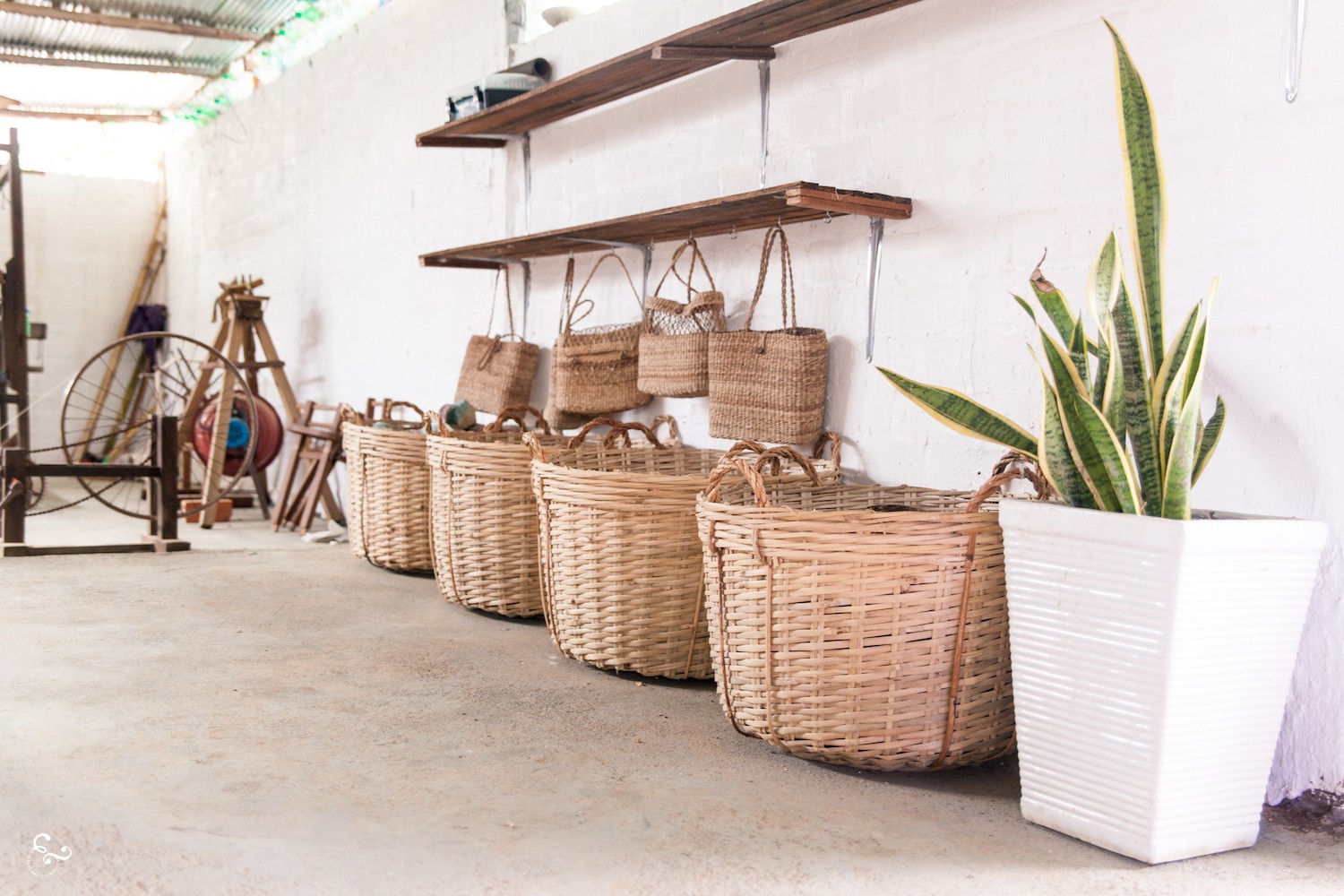
And then came the tornado
Then in late April came something really unexpected. What can only be described as a small tornado ripped through our area, over the rice fields and unfortunately right across our centre. Every tree in the area was uprooted and thrown across the fields and into the canal (meant for water irrigation for the farmers). The new powerlines down our road were destroyed. Our roof was torn off and thrown down the street. Our machines soaked. Beam collapsed. Paint washed away, pelted by relentless rain. It was devastating. We had to start one half of the building again (it had only tore through one side).
Lis has worked here for nearly 10 years and never seen one. We spoke to many locals who have lived in this region their whole lives and had no idea what had happened and assured us it had never occurred before. There’s not a good translation for it either; the closest is washing wind. It is highly unusual as this whole season has been. Deeply hot (way above average with many days 40 degrees celsius or higher), extreme drought, and no breeze to speak of. The talk of the town is only around the weather; every conversation centres around it.
(Only pictures from a dodgy phone camera here – a house that disappeared, the fallen trees, the roofs smashed up and half our centre damaged).
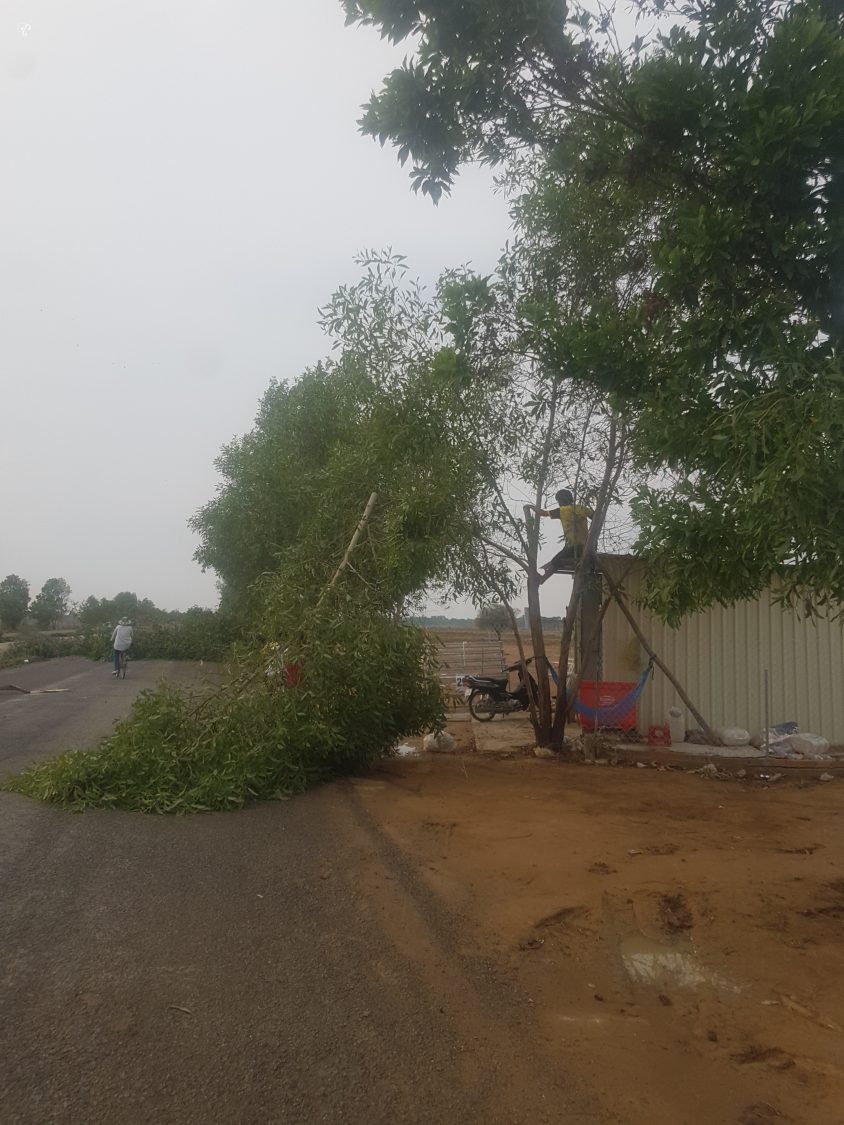

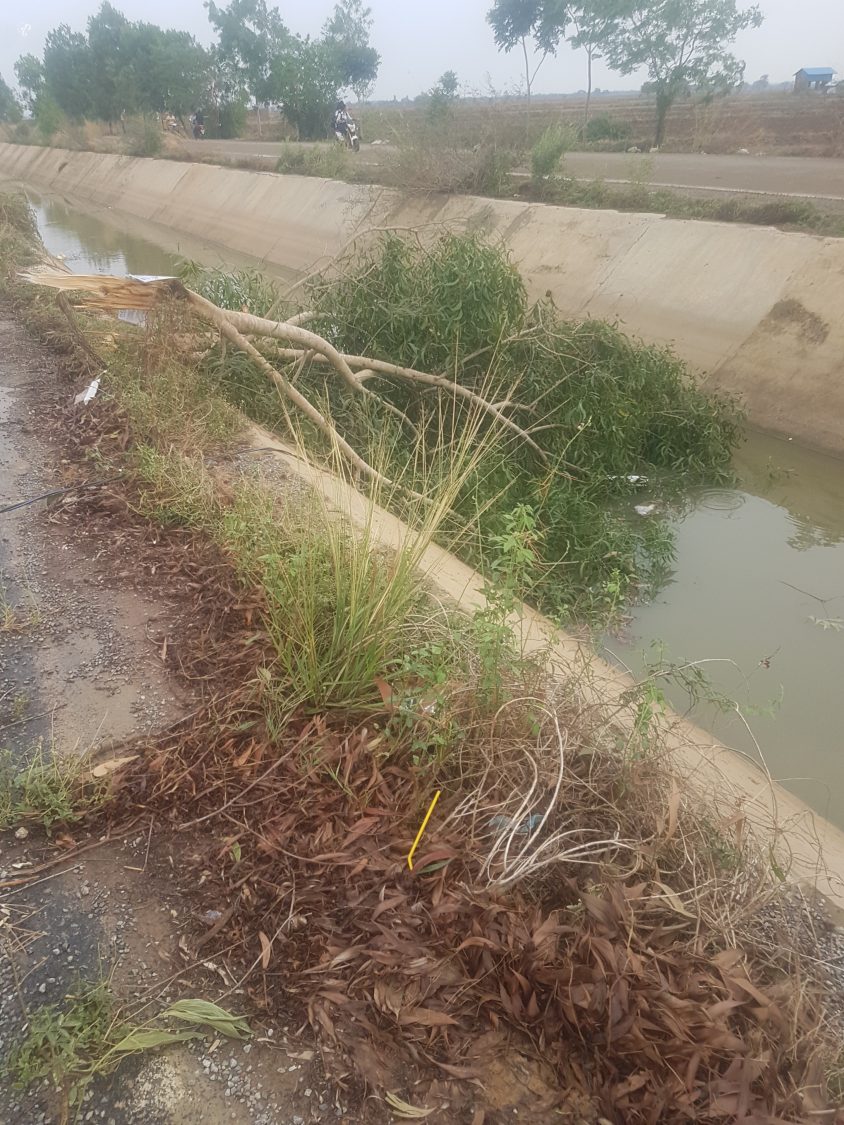
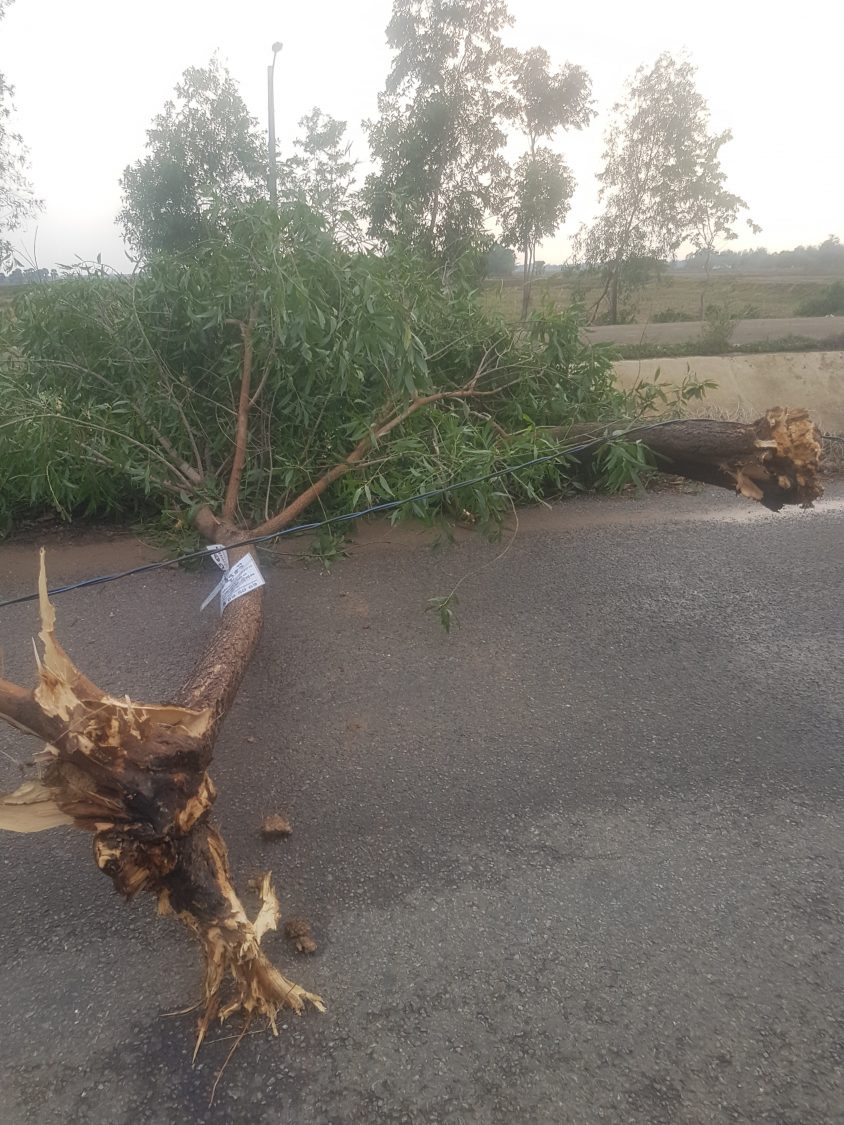
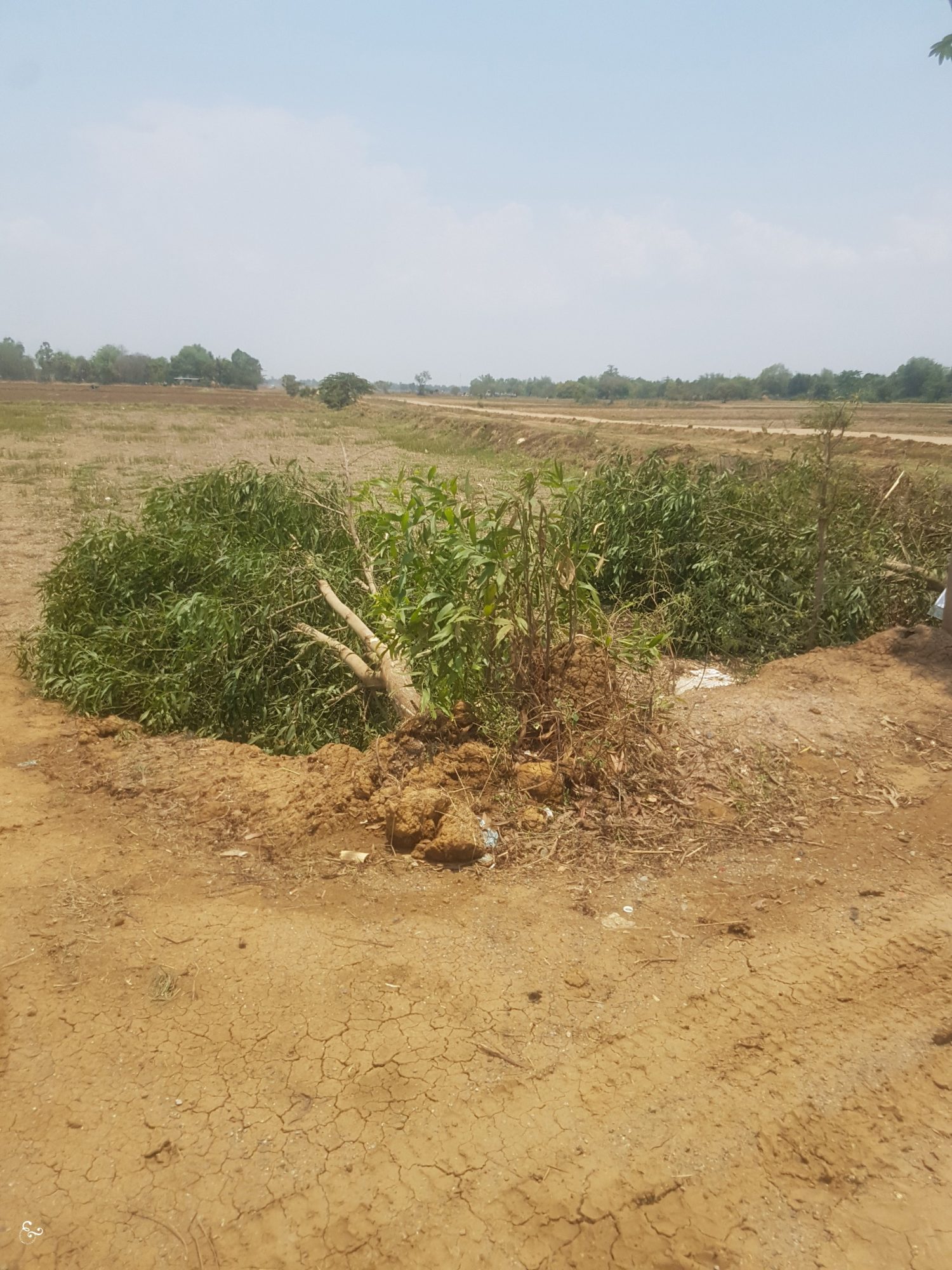
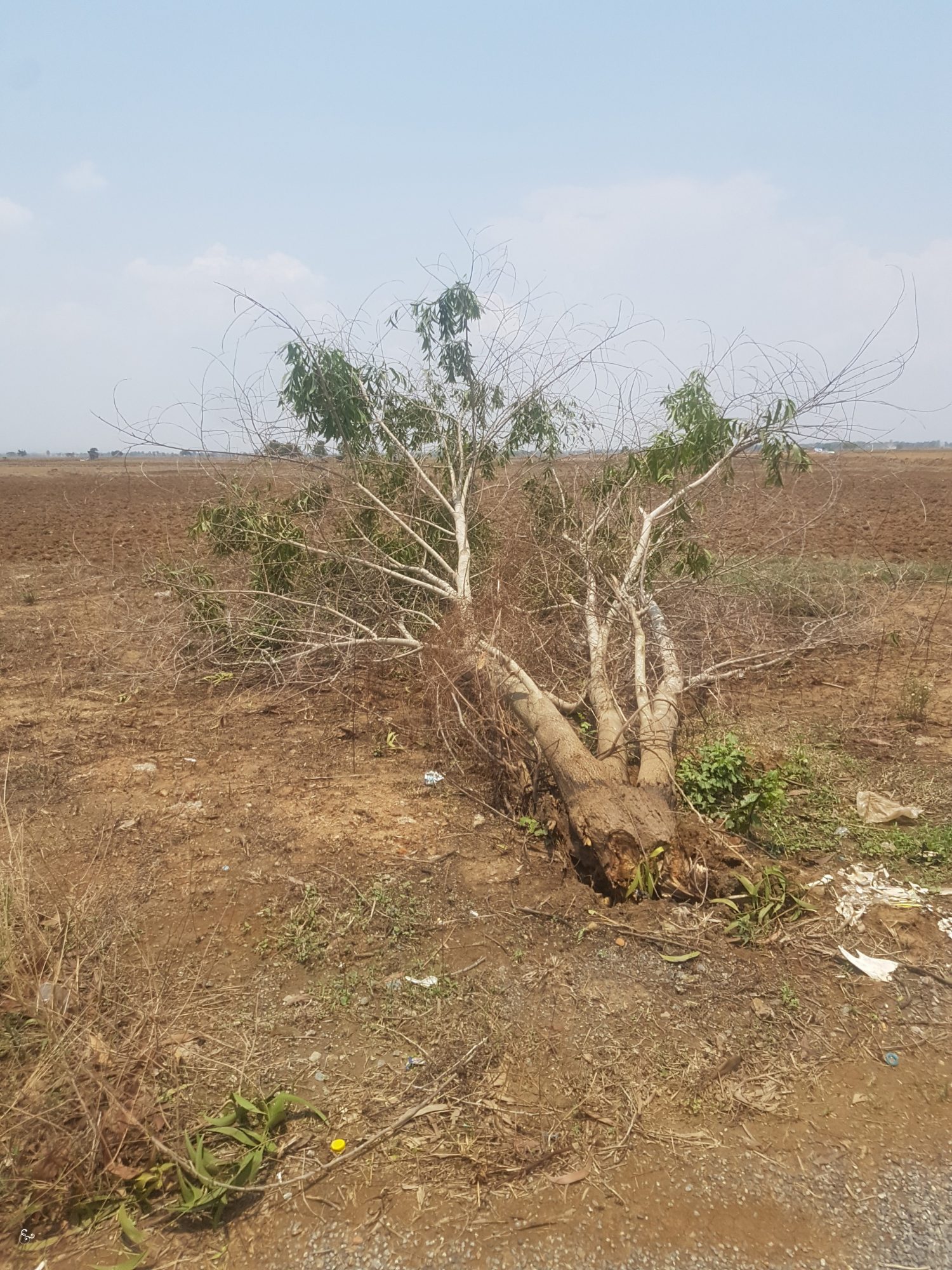
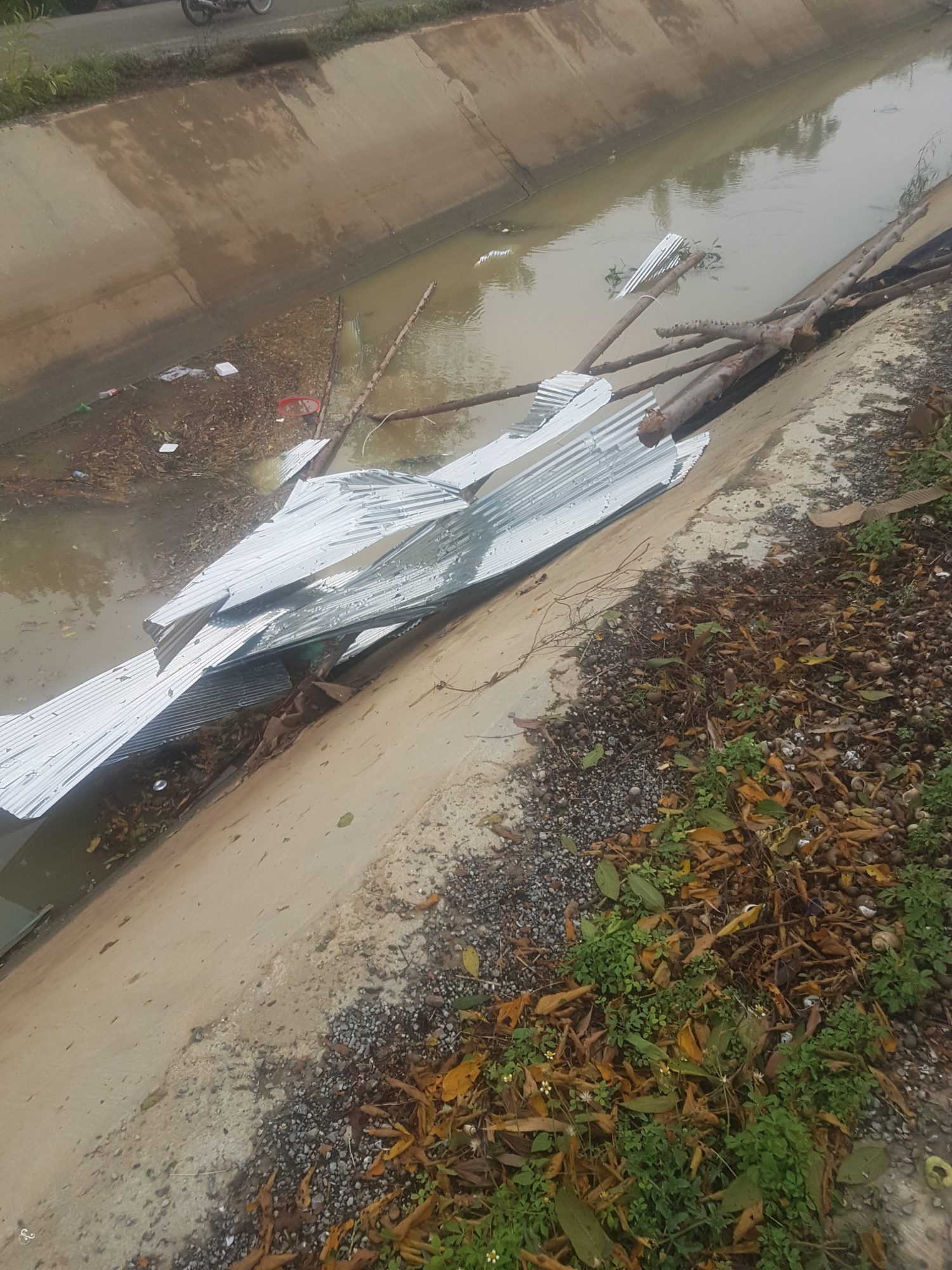
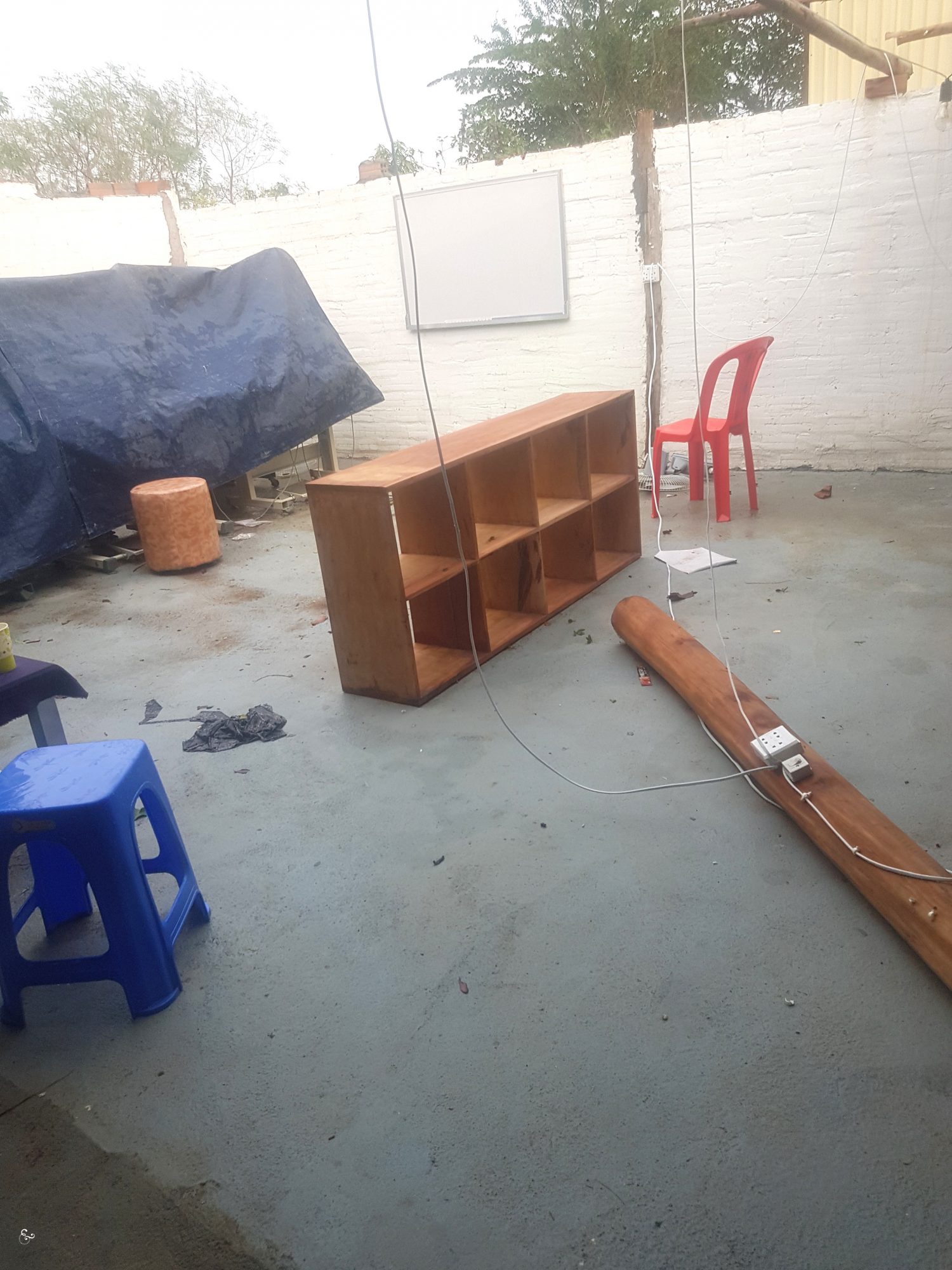
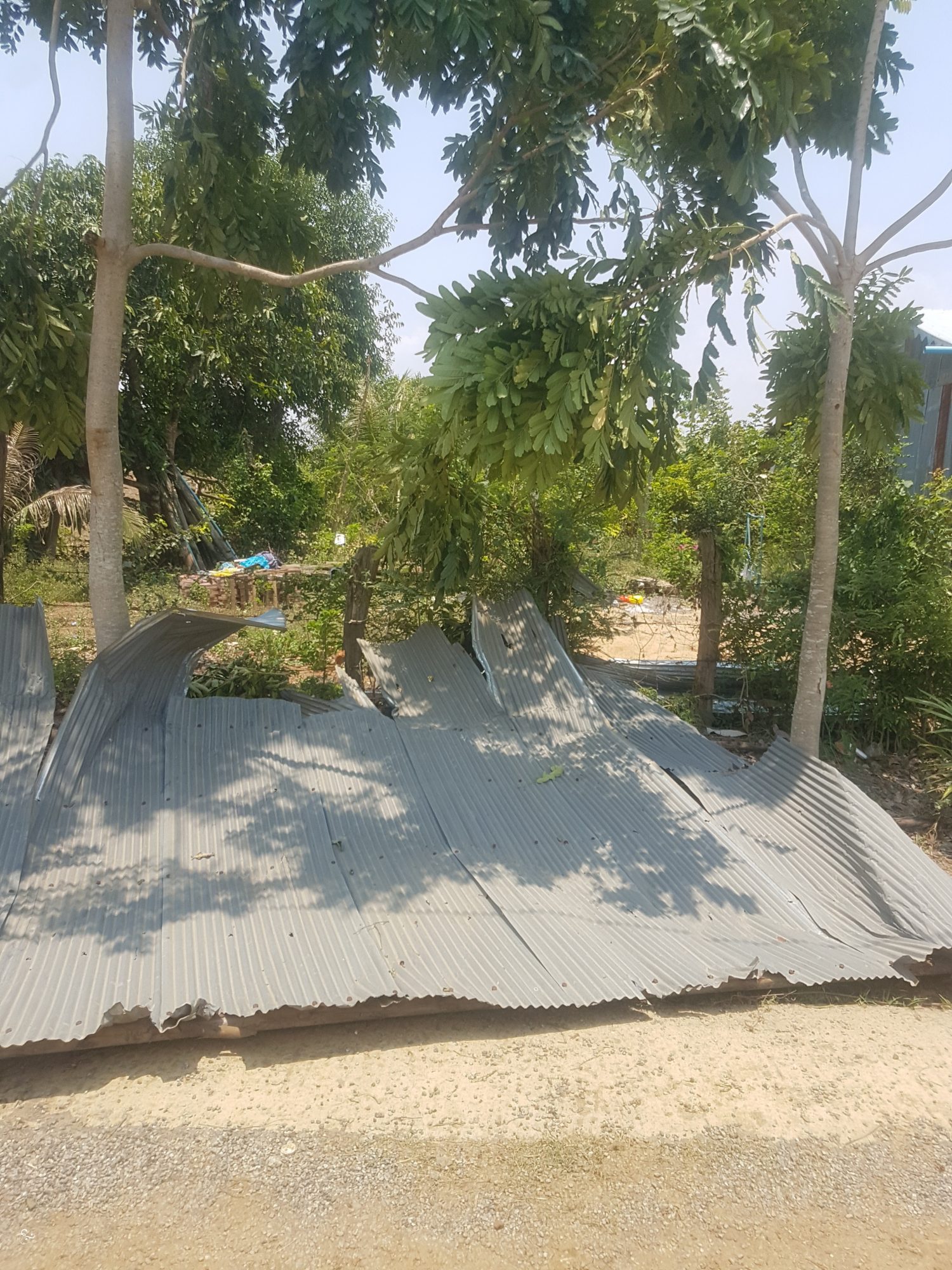
The completed centre
With the help of everybody we rebuilt as quickly as possible and then put the centre back together – with a few more bolts and screws. Here it is!

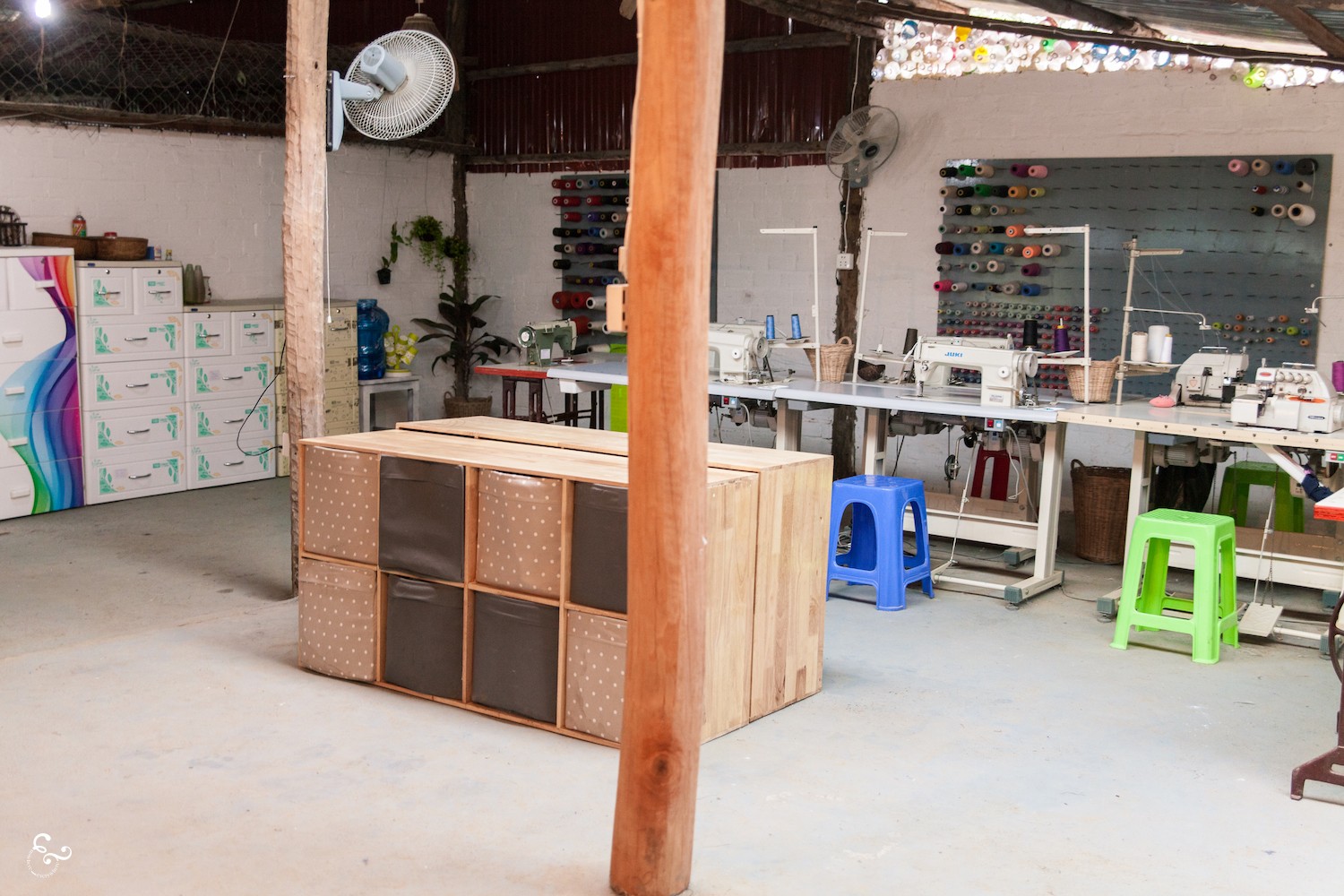

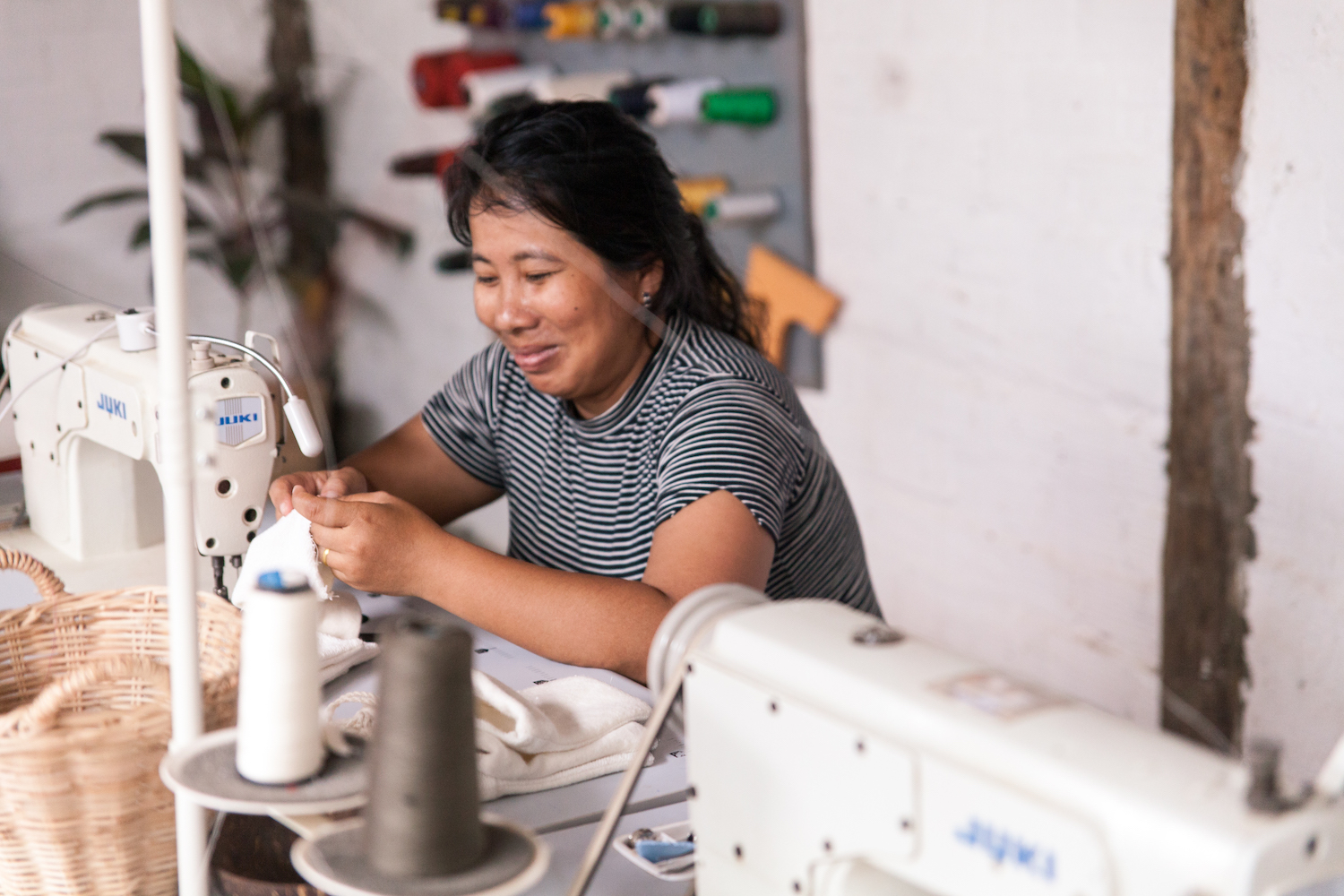
Features
Aside from a much bigger, brighter workspace, part of being a good place to work is also making work easier and more enjoyable. Here are a few of those and other things we do at the studio. You can read more on our ethical labor here.
Water stations
We set up two main water stations for staff, and kids when they attend class each day. We don’t have running water out here so these are the best we can do for health & the environment. Twice a week all the bottles are swapped out. It means we could stop all the small plastic bottles from coming into the centre each day as part of our plan to cease plastic burning. There are now plenty of cups and bottles to drink from.
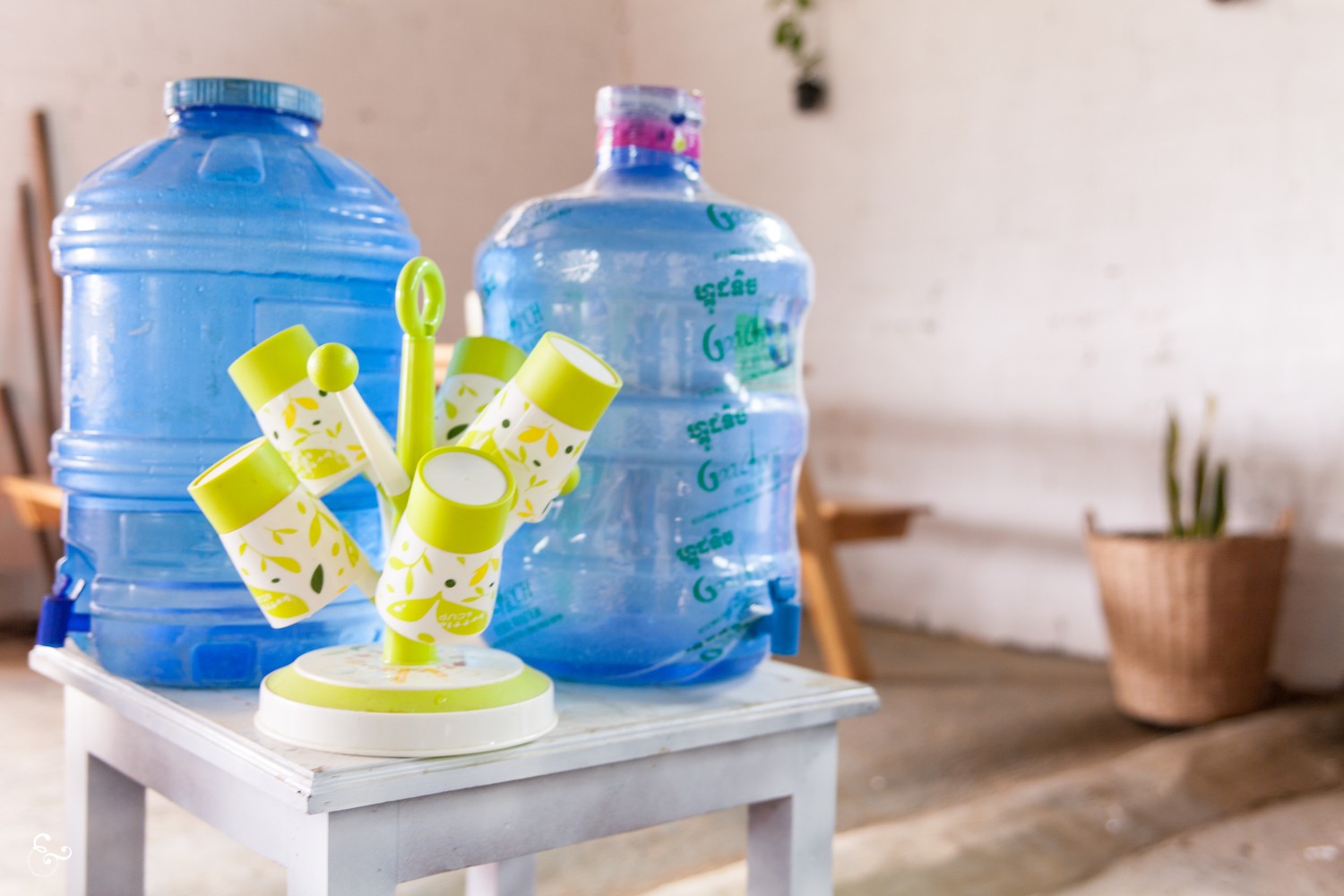
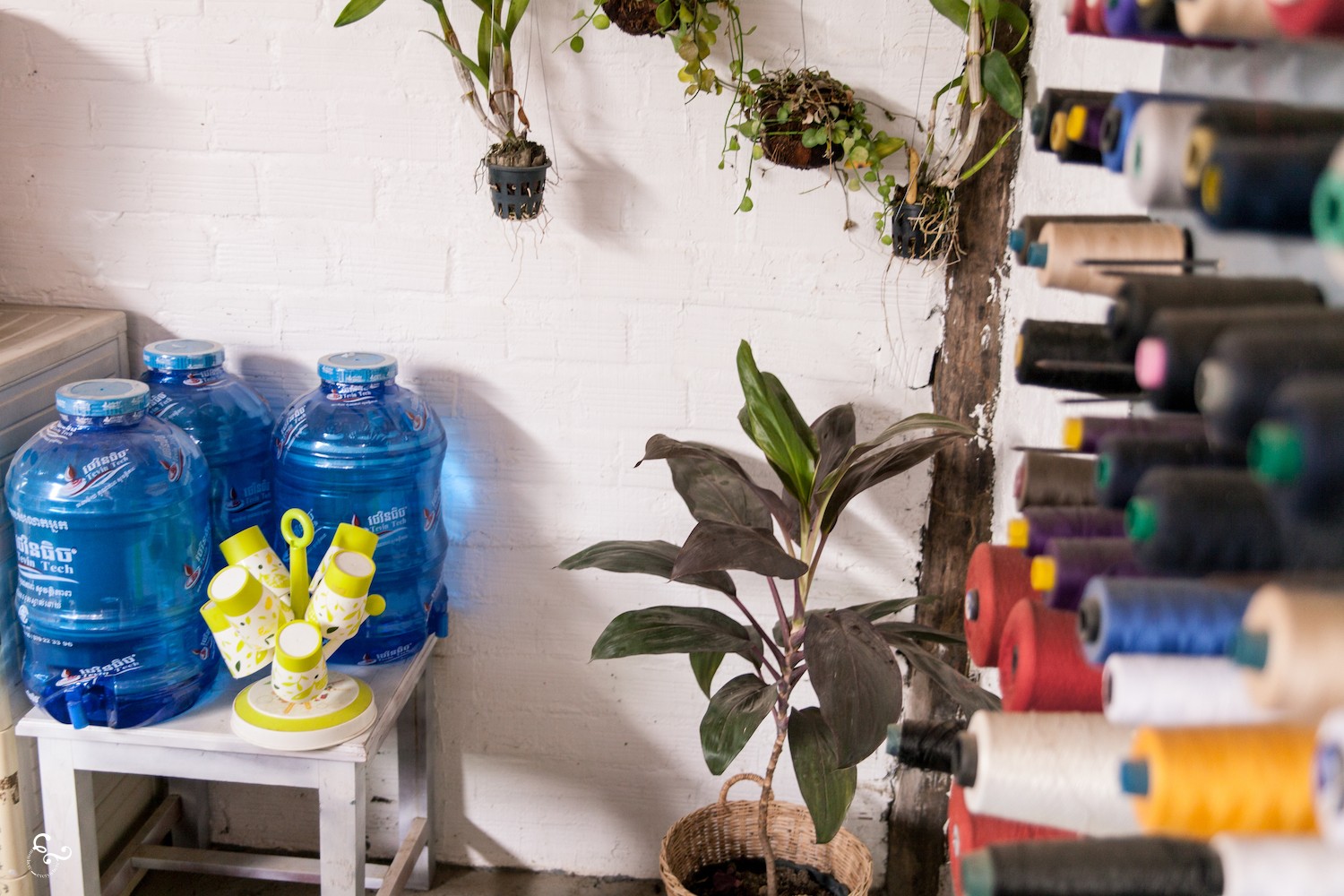
Labels from scraps
Most products use synthetic labels; it is very difficult to get printed 100% cotton labels (hemp and linens don’t seem to exist) and very expensive. We make our product labels largely from scraps of our hemp and light linens. We save them in baskets each week at the sewing area and then move them into dust and rain proof bags (one very good use of plastic!). These are cut and sewn into each product. It is currently quite an additional process and a bit of a pain getting it all stamped and complete but worthwhile.
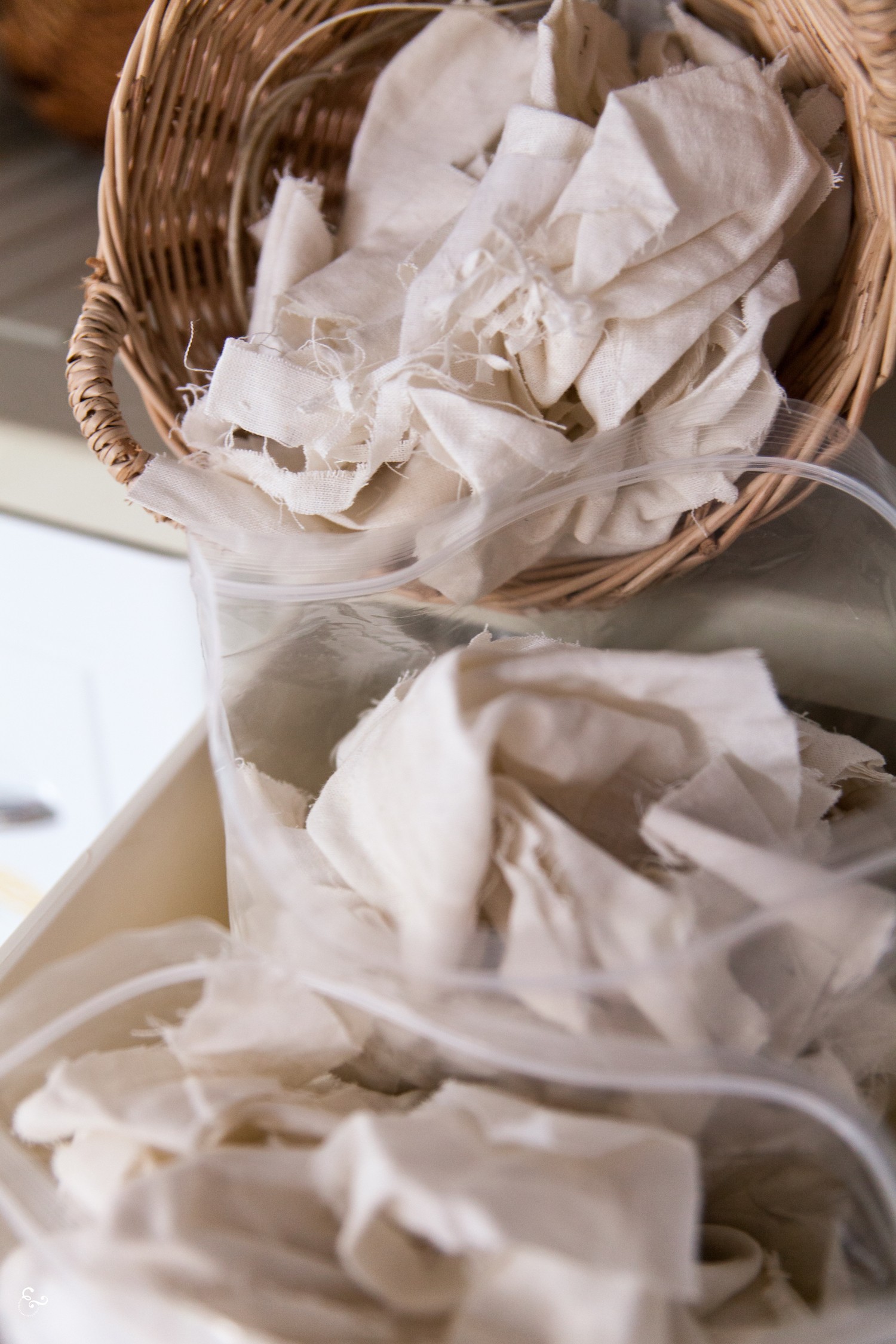

Plastic free lunch area
There was previously no area to eat during the day. Staff can go home but we also wanted a place they could enjoy having breaks and where the kids could sit. We bought plenty of containers (only plastic reusables were available) and cutlery so that food from home & the markets could come in these instead of all the little plastic bags. It’s not quite perfect as it’s a constant habit and practise, but we’re nearly there! Since this area has been established, most lunches have been had here and Lis eats here most days.
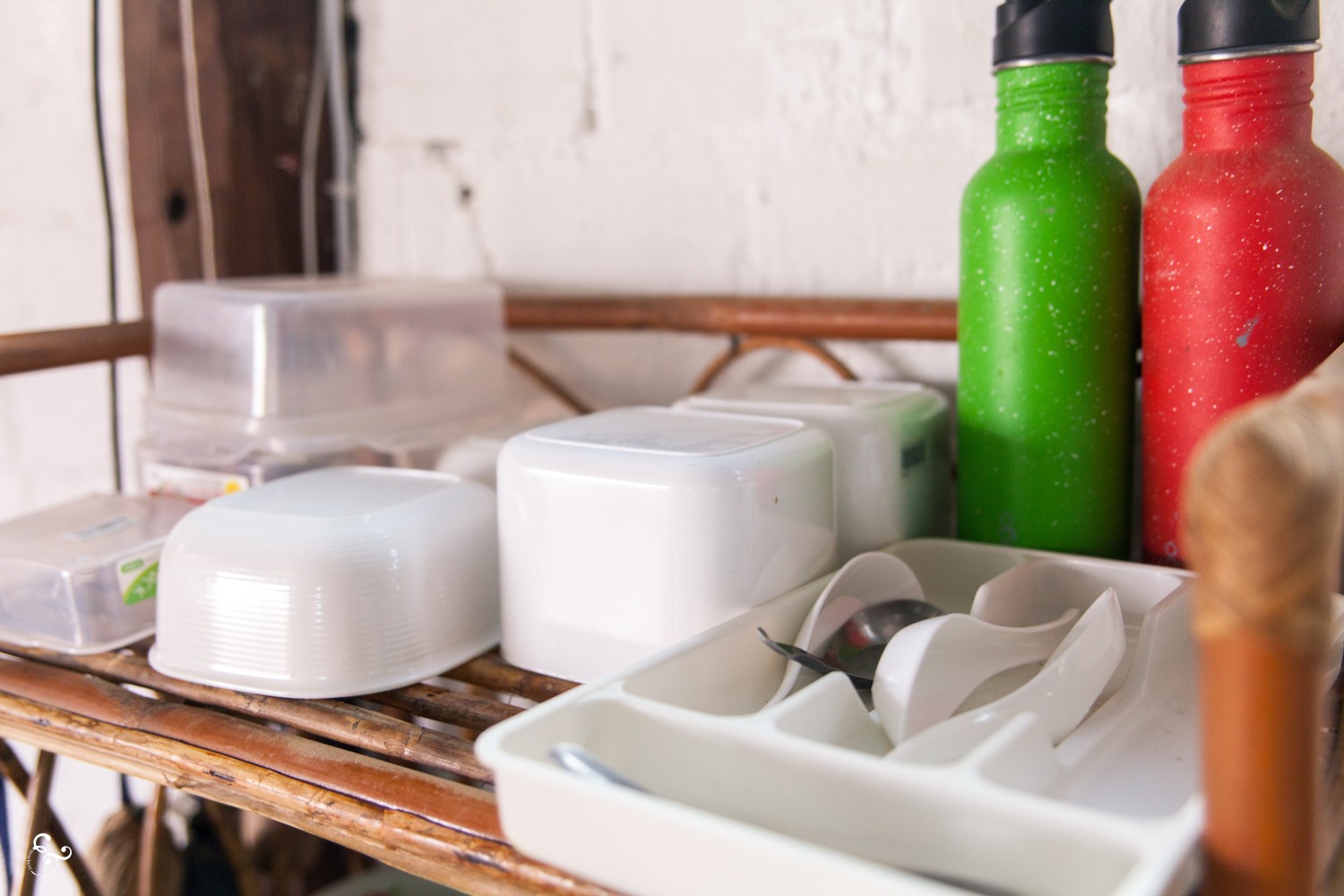
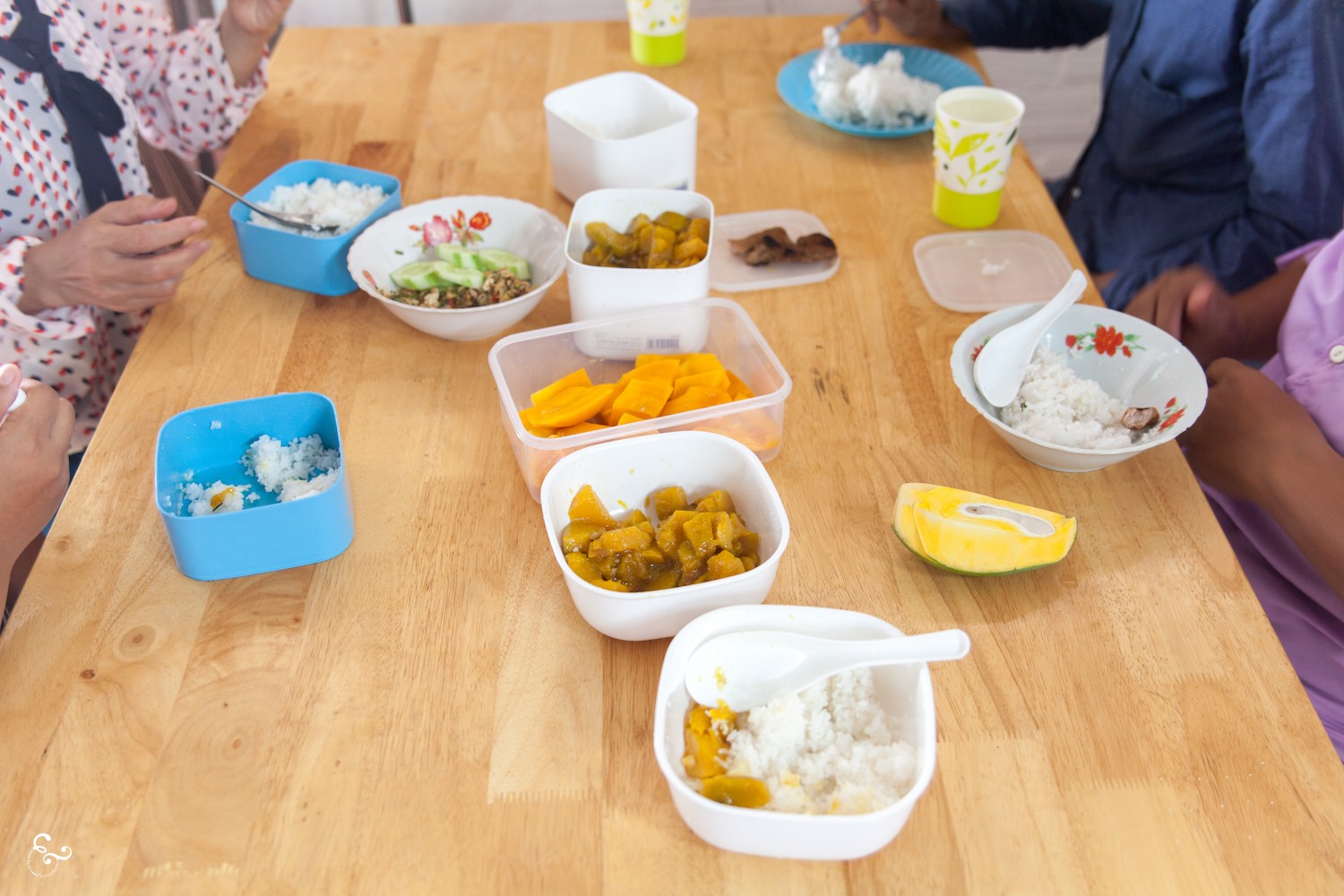
Cutting table
The old centre was tiny and had no room for a cutting area. We had spoken to everyone and this was definitely desired! We bought a locally made table and set it up in the remade room. Cutting is now a significantly easier, quicker and cleaner task and has made everyone a lot happier.

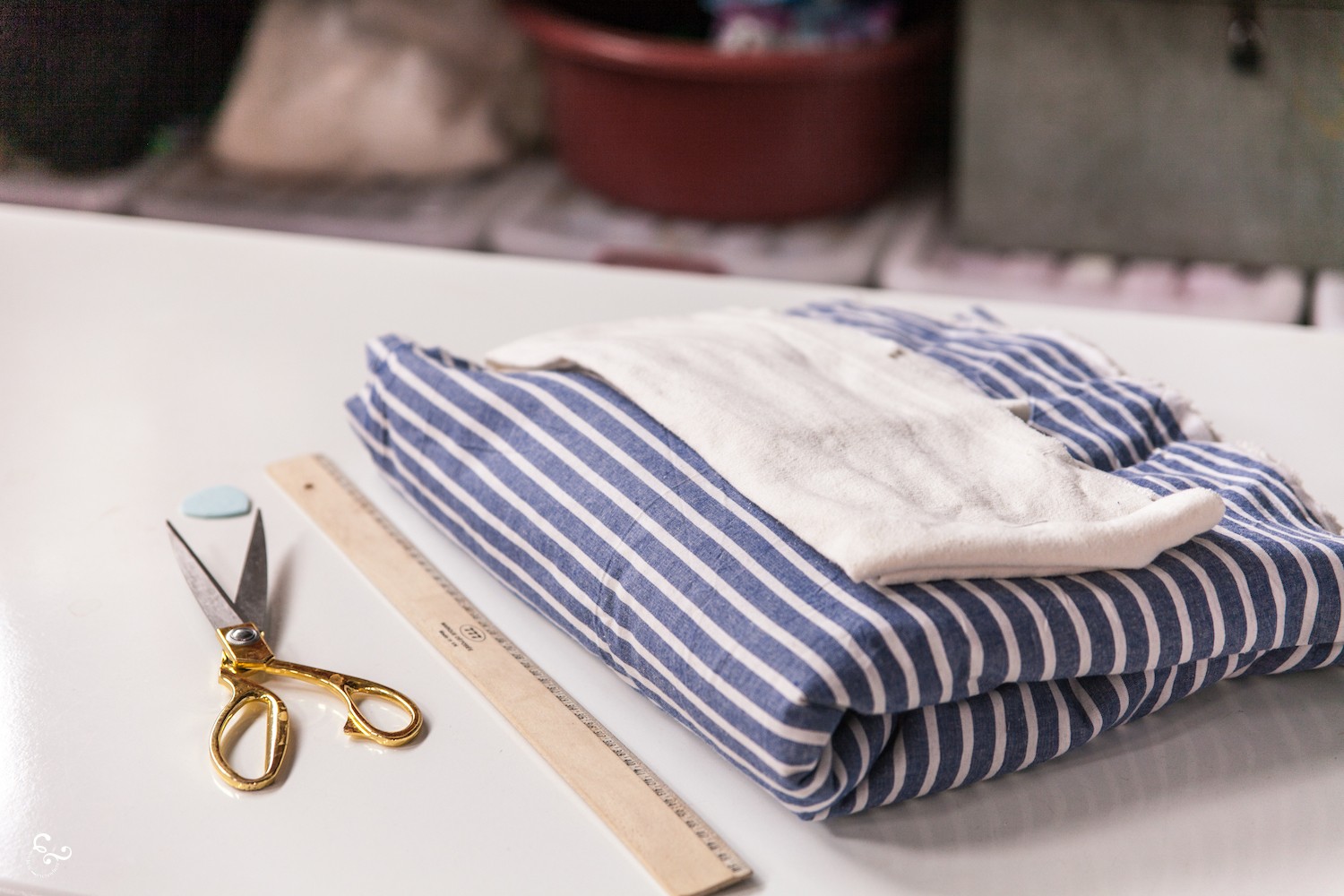
What else we do here
Aside from ensuring the kids classes and community projects keep running, we also do more outside of sewing our products. Our environmental workshops generally happen in the villages rather than at our centre.
Coconut bowl making
We collect discarded coconut shells from the community and markets and turn these into coconut bowls in our store. We also use plenty around the studio as they’re super handy for storing small items such as screws, food goods and buttons. Also love starting little plants in them. You can find them here.

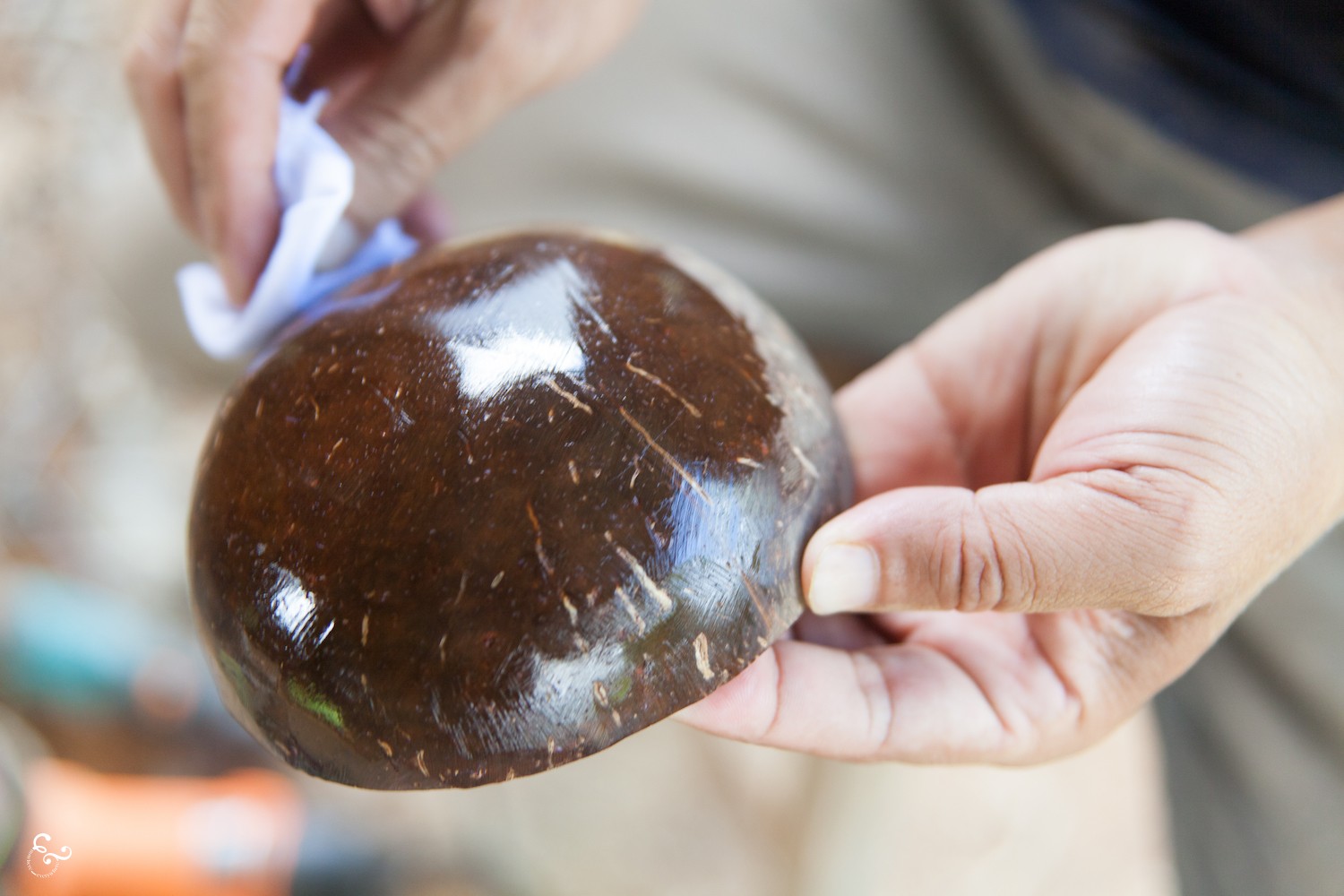
Coconut oil making
We press our own coconut oil for the bowls, buttons and for staff to take home for cooking and skin & hair care whenever they need it. We bought a few drilling and pressing machines (as pictures) so this process is a lot easier and bottle it all up in glass away from the sun.
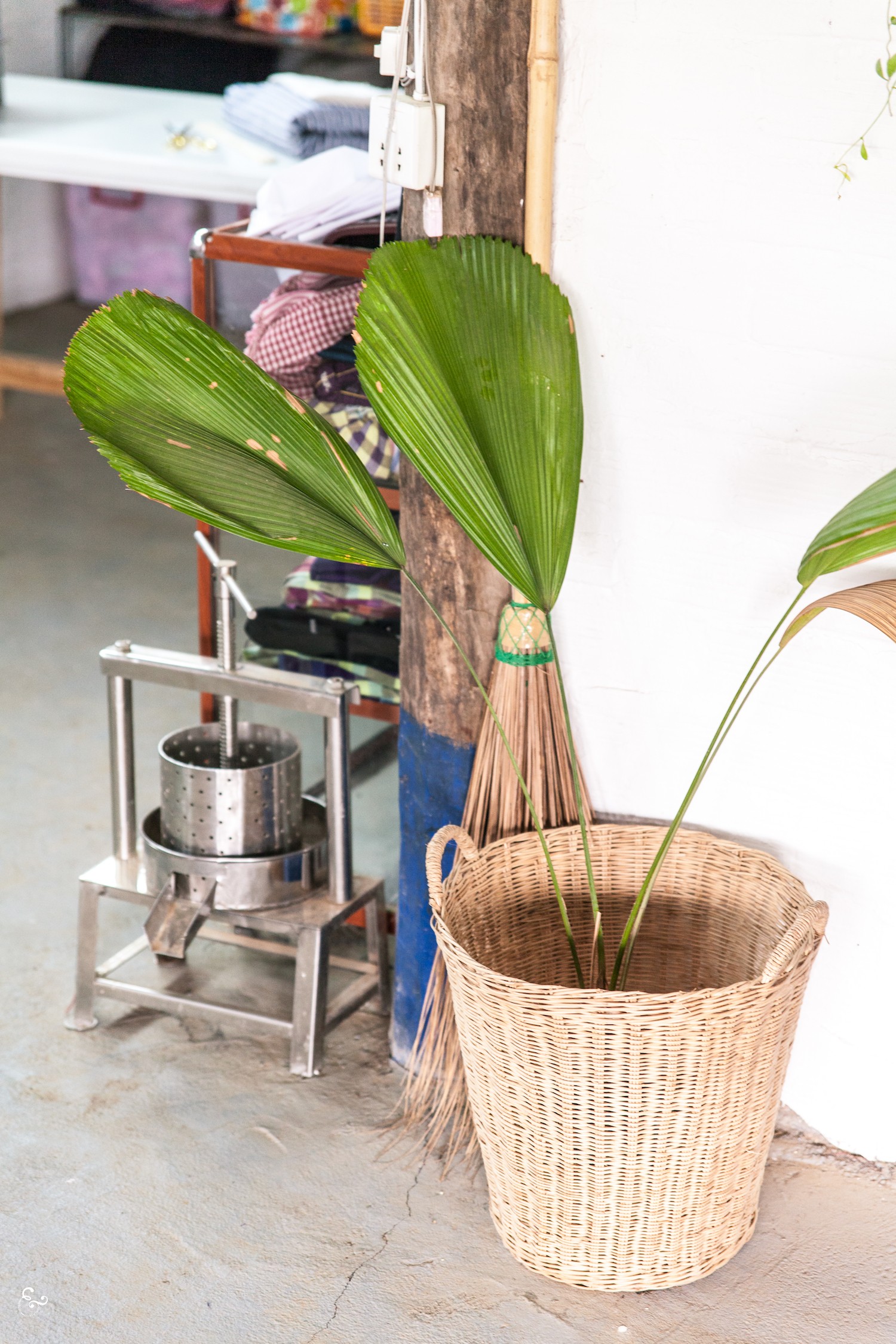
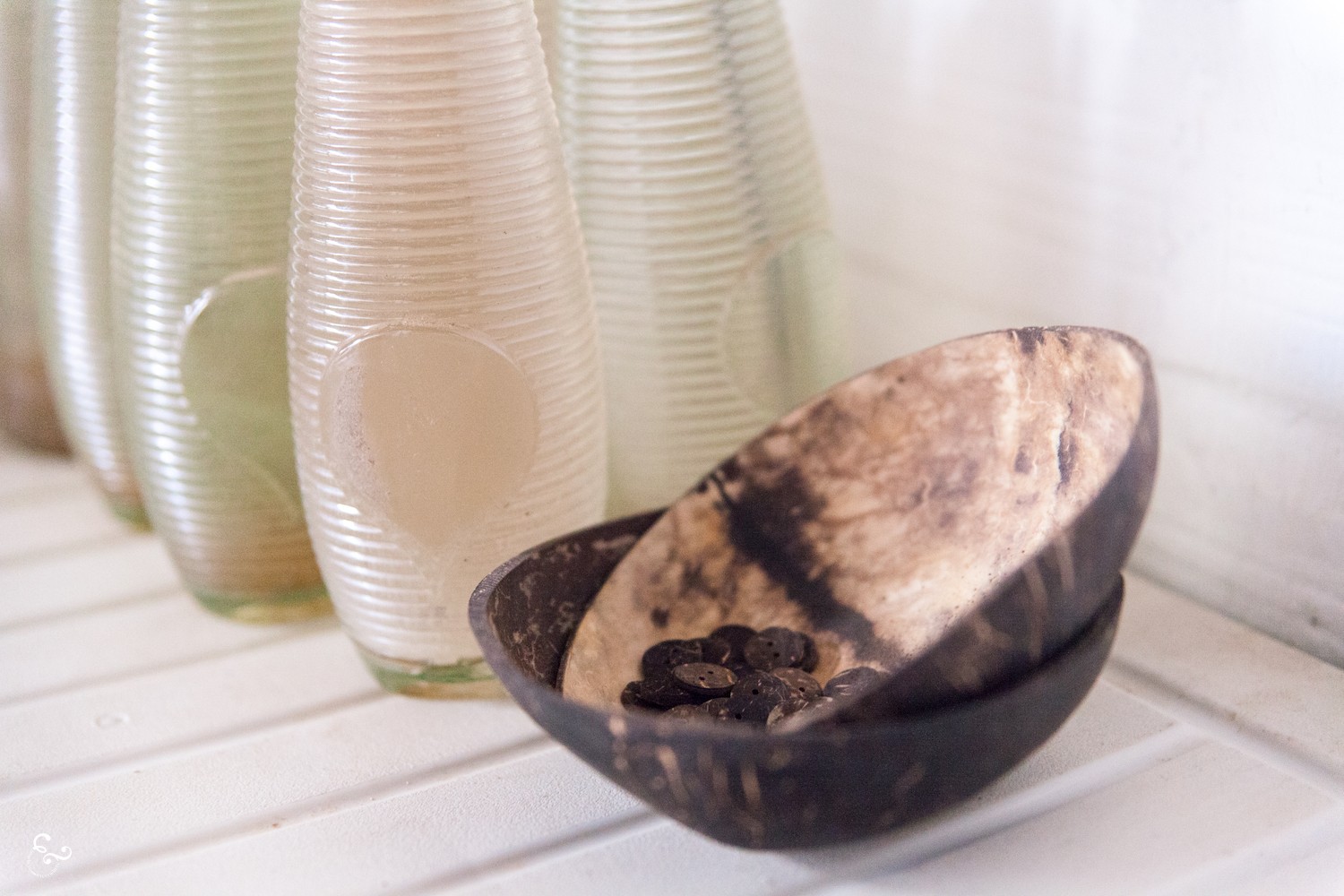
Coconut button making
We wanted to ensure any buttons we used were also biodegradable & compostable along with our products. We receive plenty of shells we can’t use for bowls so we utilize these for buttons! When you purchase one of our products that include buttons, you will also receive a spare of each so the product lasts as long as possible. The kids also find this process fascinating so love learning about it and playing with the holey bowls at the end. The photo below was taken by another child at the centre; they take Lis’s heavy camera and get to work in all sorts of poses & fun!
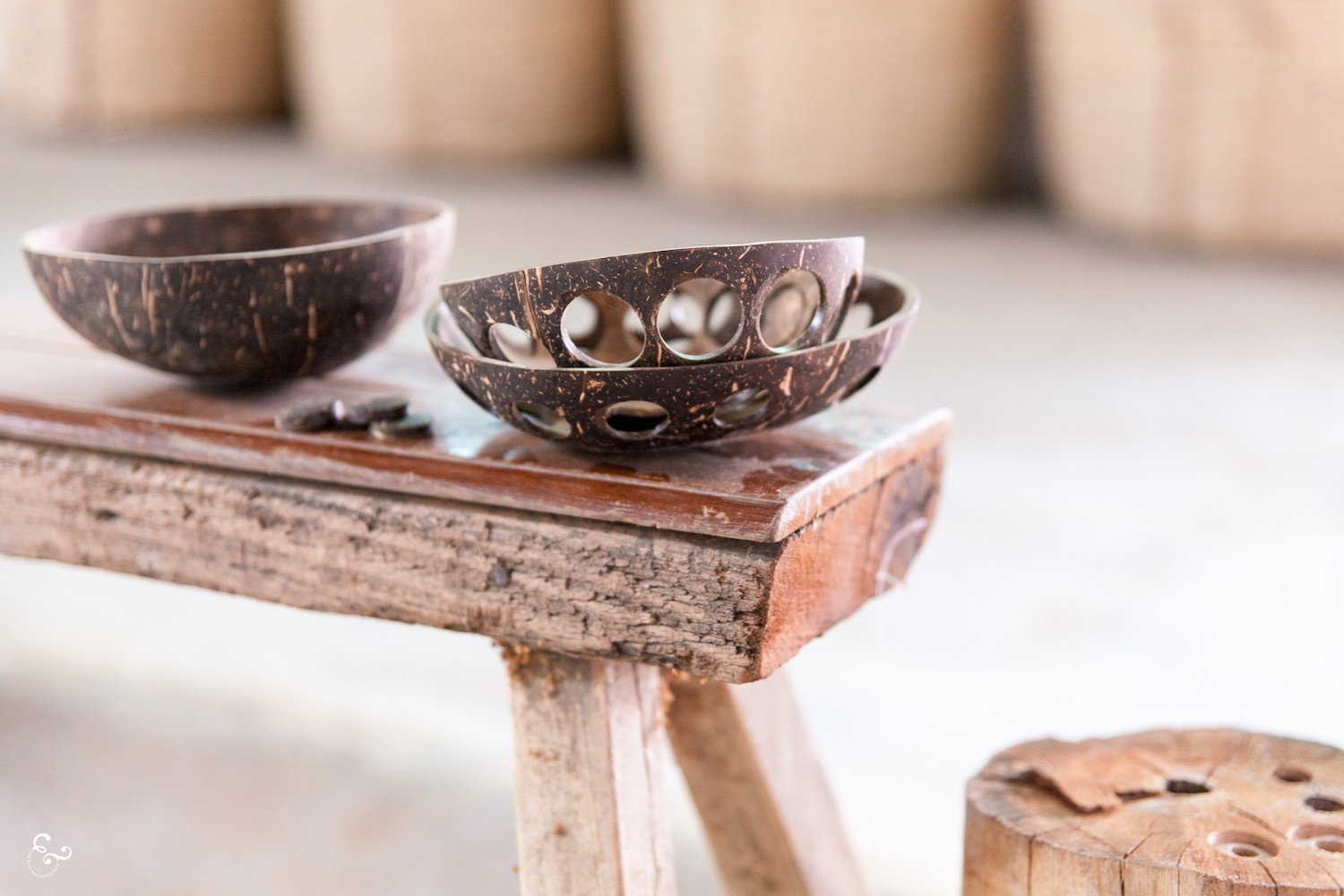
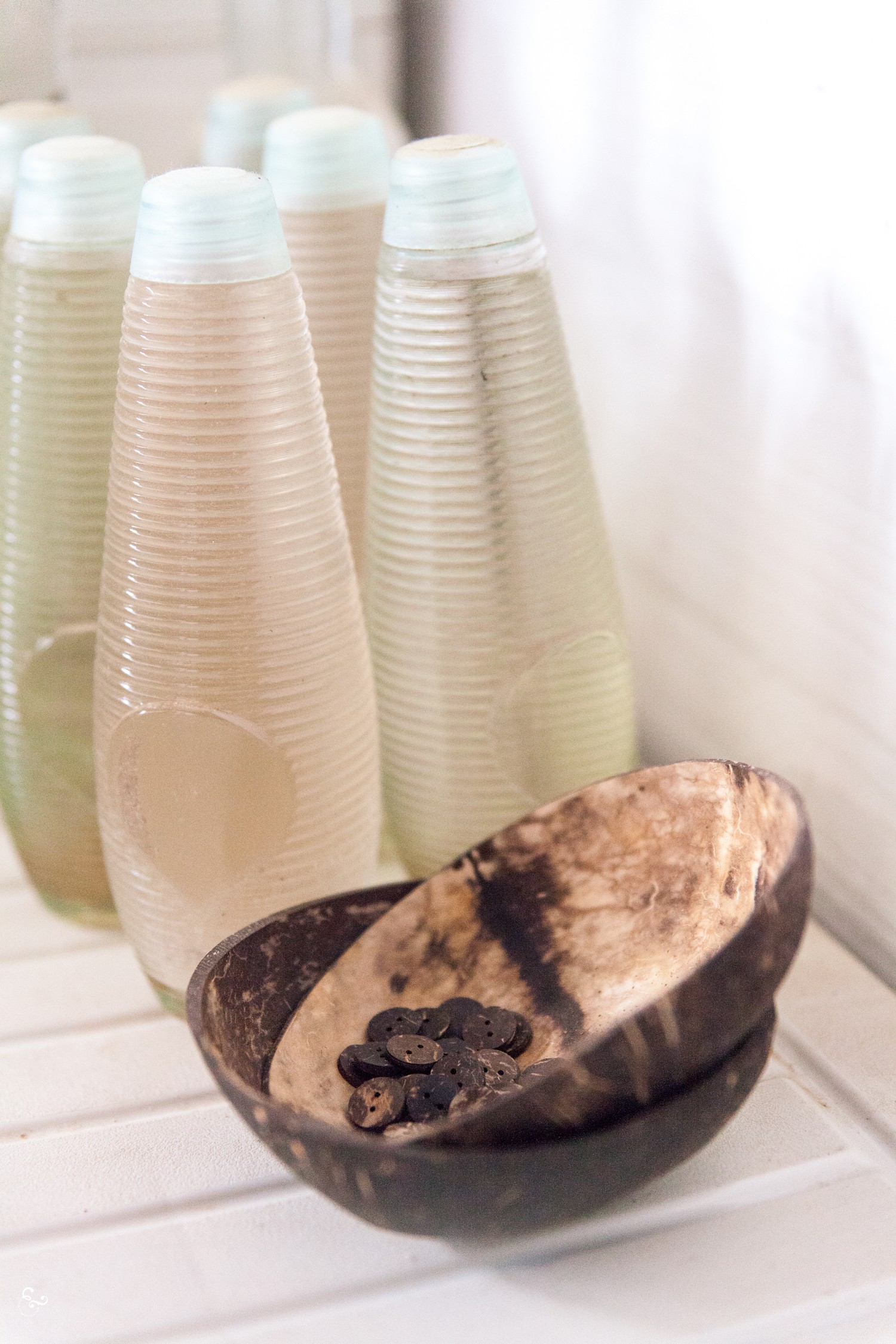
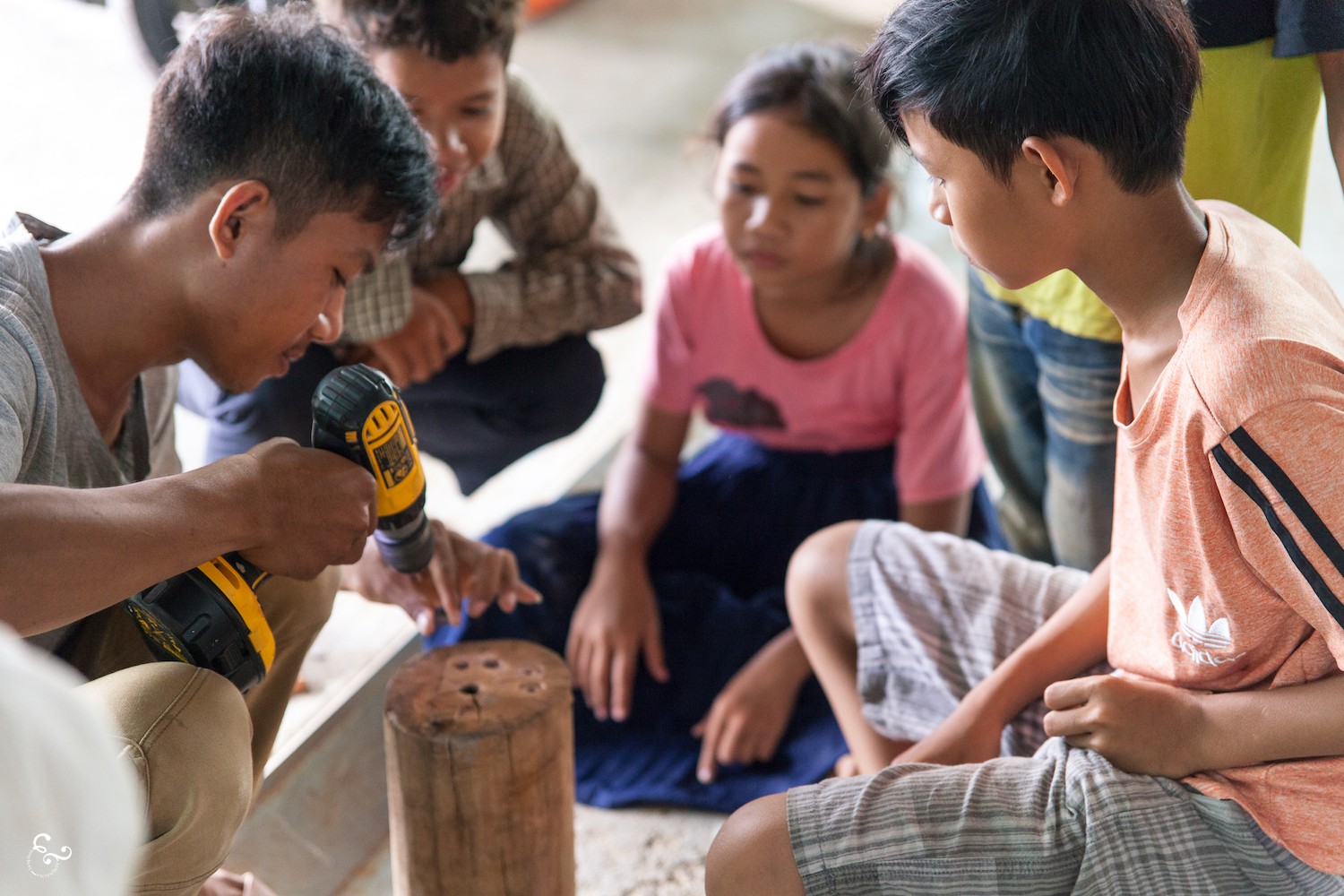
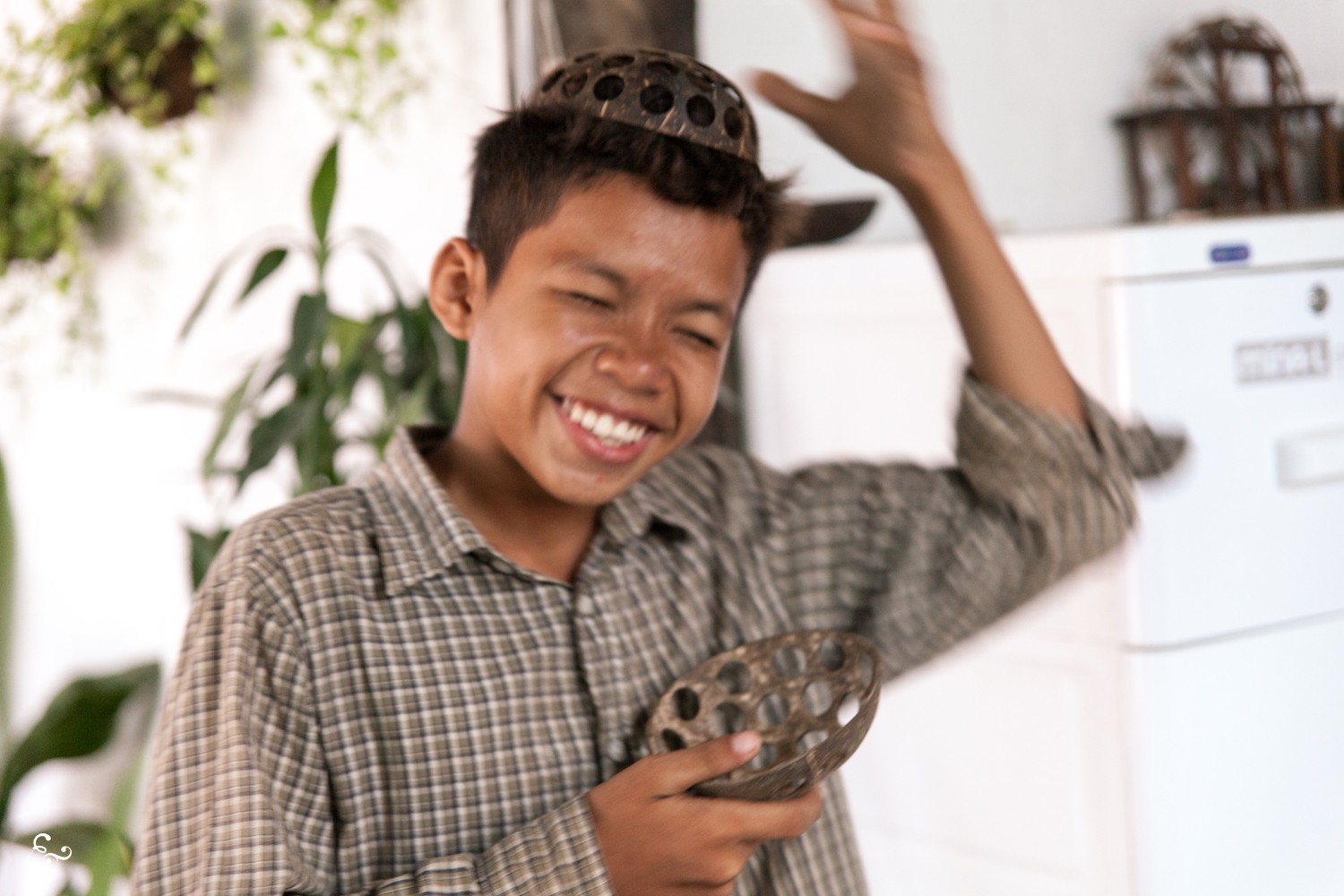
Eco bricking
We try to work with families in the villages near us to collect soft plastics from home and then run eco bricking workshops at the studio. We are still trying to work out how to store these and to get them the right weights but are hoping we can use them for benches and gardens at local schools in the year to come. We have plenty of clay in the area we can work with!

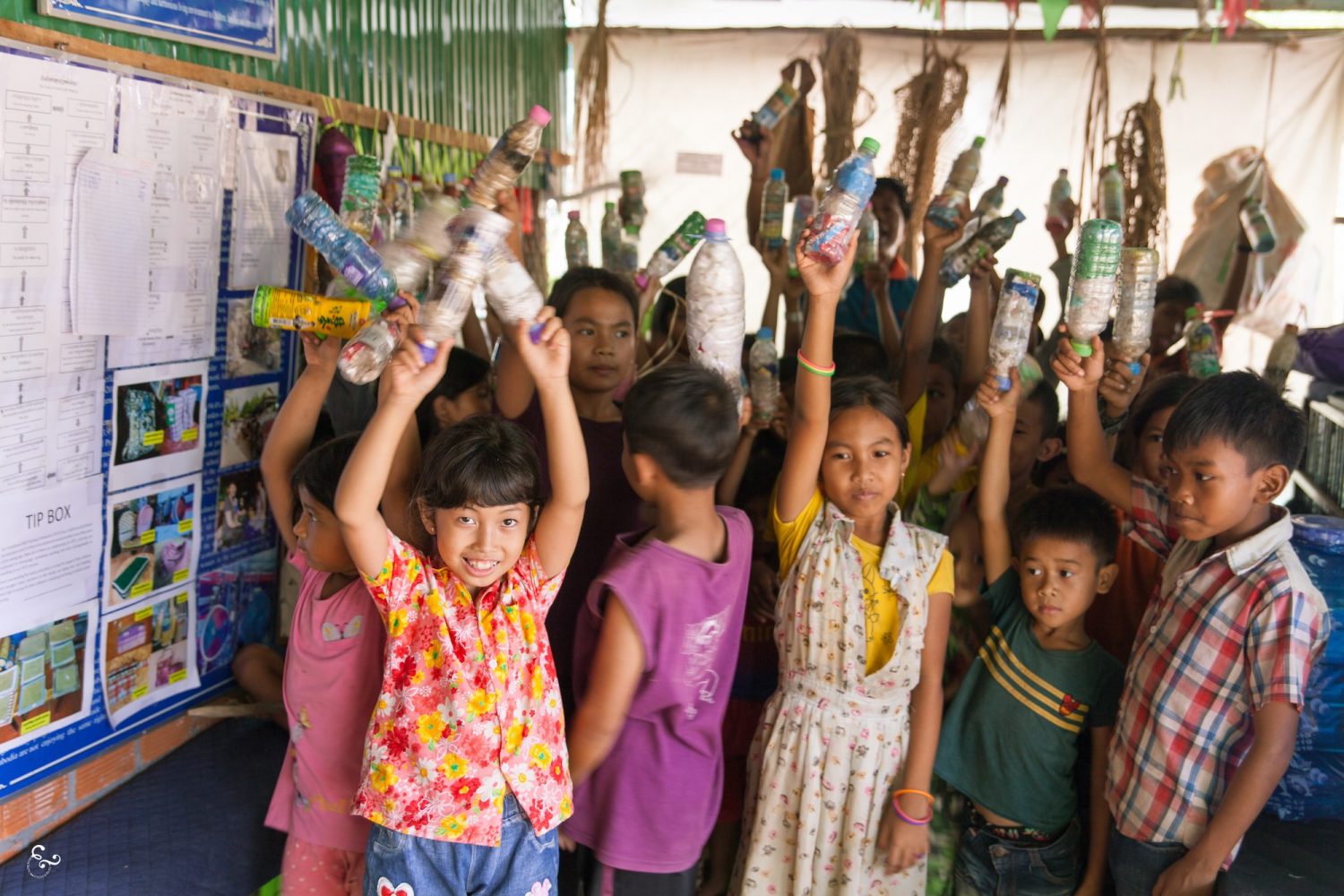

Community projects
Our much bigger studio supports the local projects that were already taking place here, now in a more ethical manner. These projects include weaving cotton bags for the community and sewing school uniforms & traditional dance outfits.
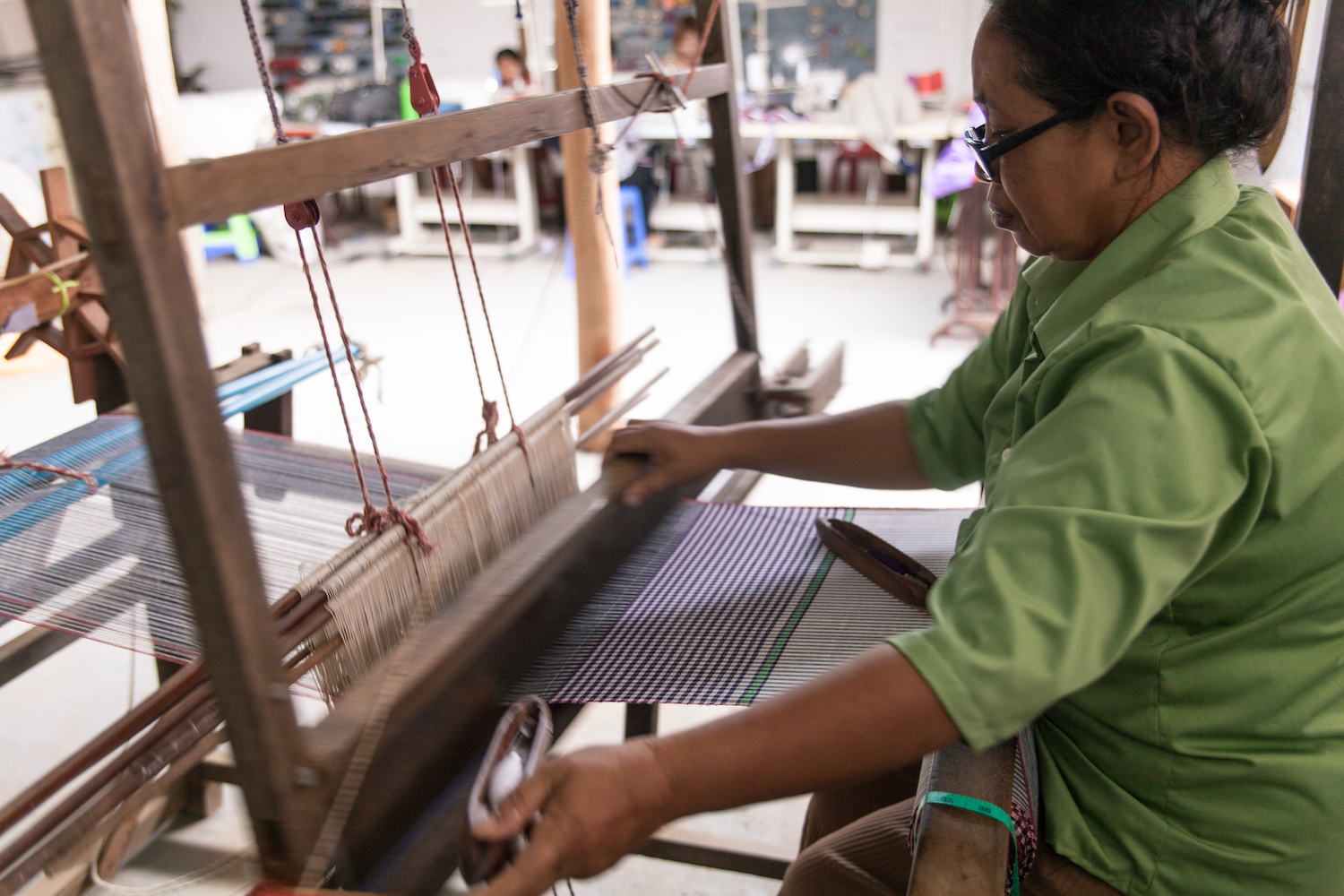
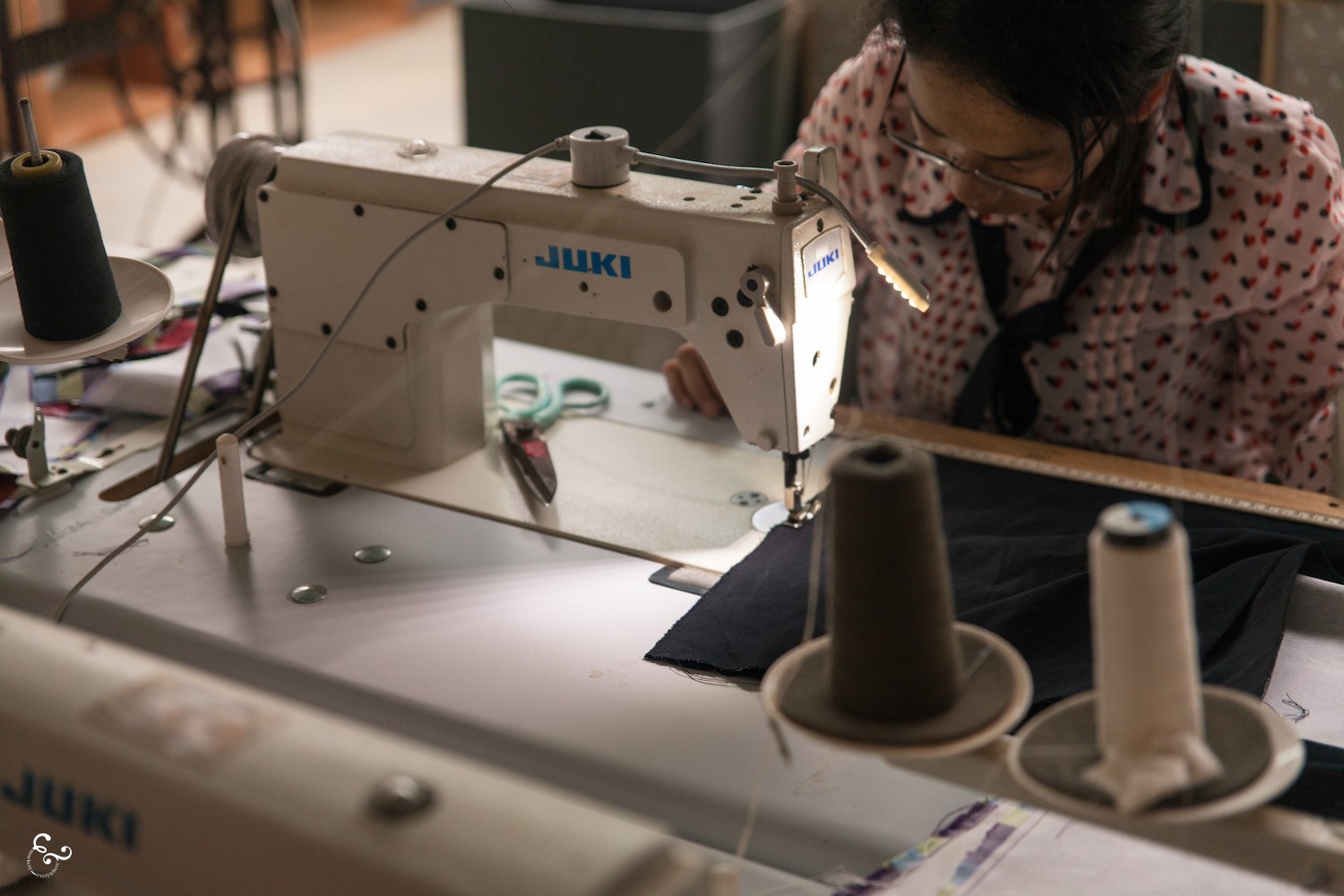
Garden & Bikes
This is an ongoing project! It was important for us to create a much more useful area at the front of the centre where the bikes from staff and kids could be parked each day. We laid out gravel and a sand access path to the toiler to establish this. Our little garden is slowly becoming far more full of herbs and aloe vera that staff can take home to cook with. The Thai basil and aloe grows particularly well!
